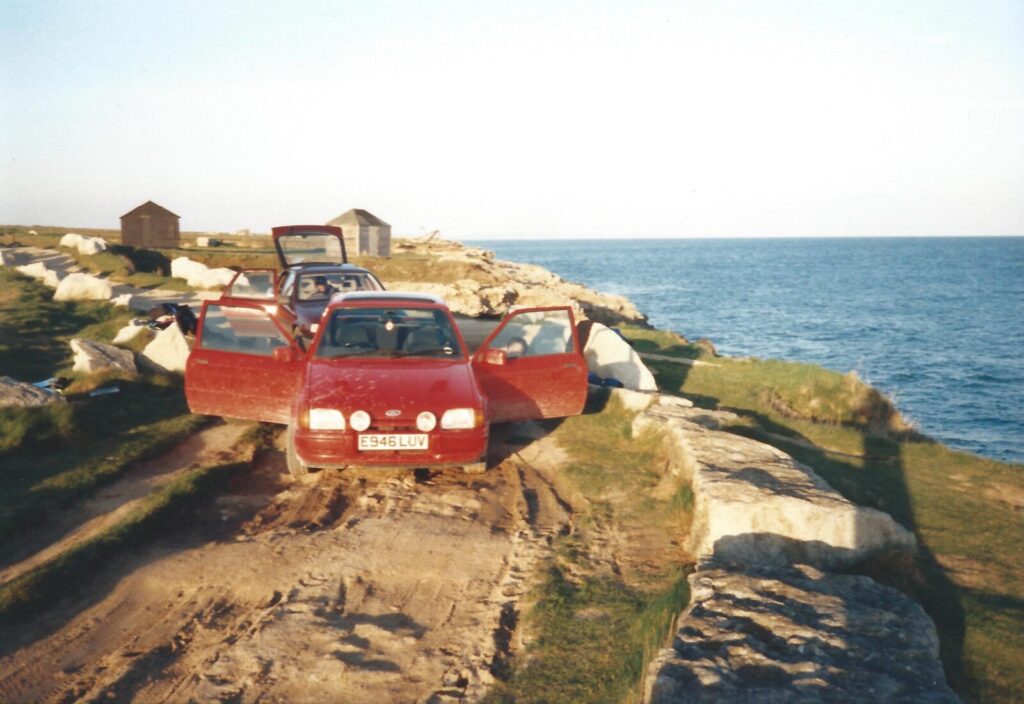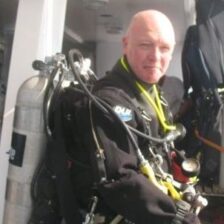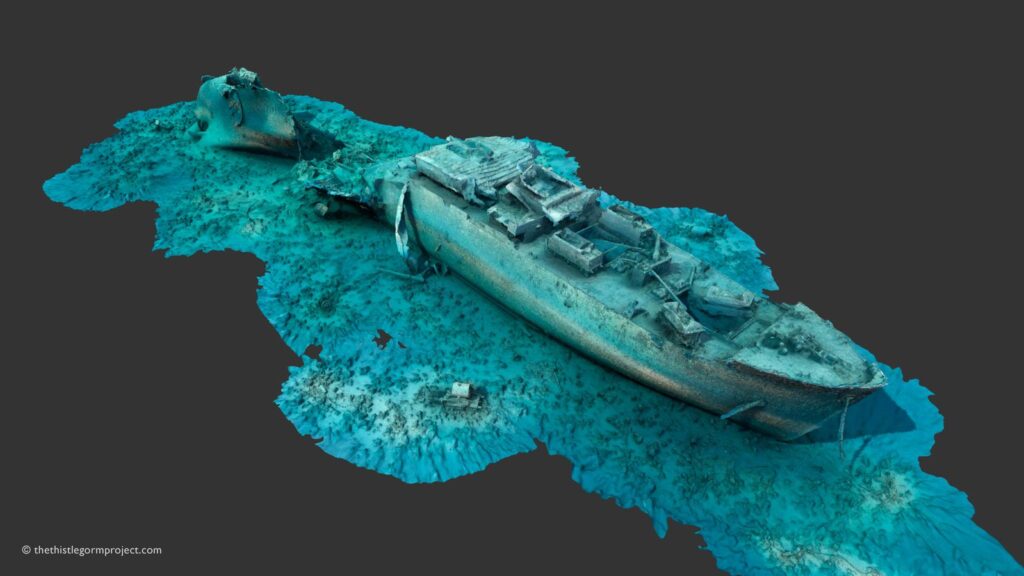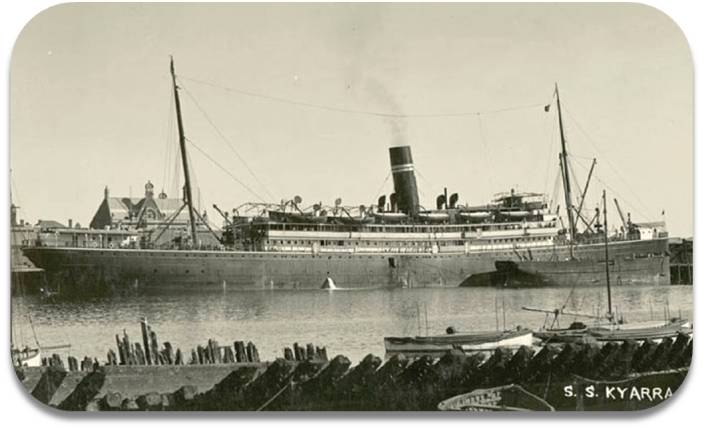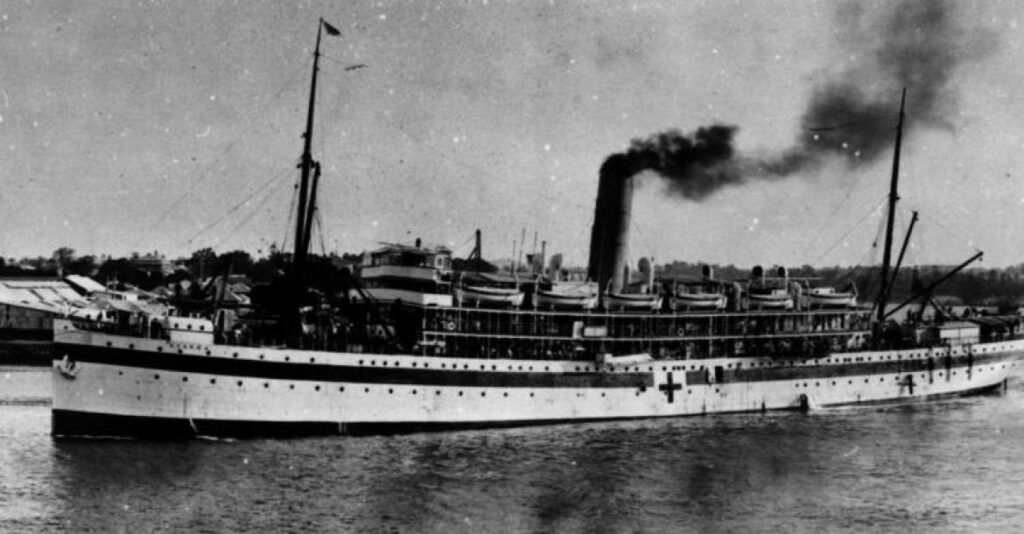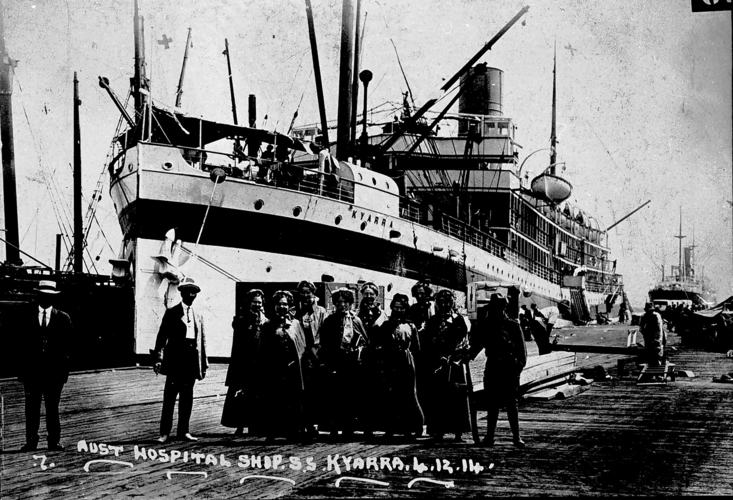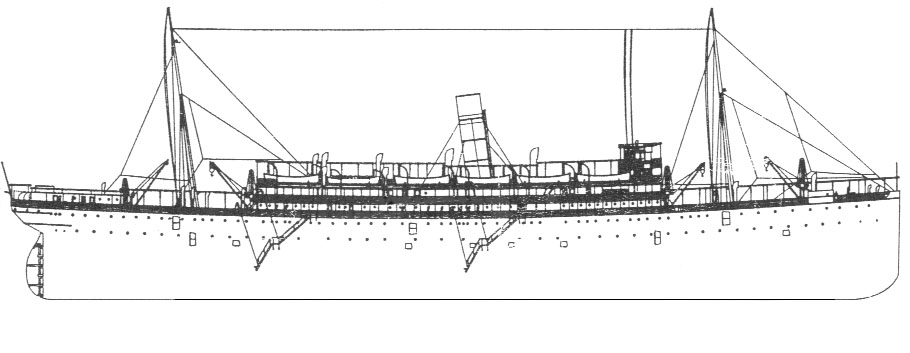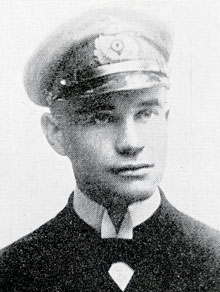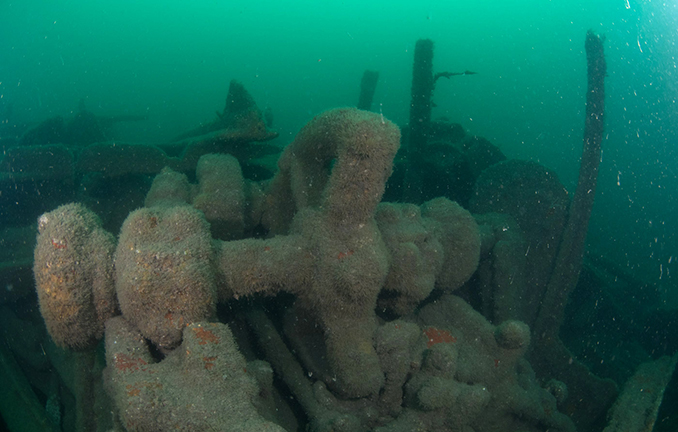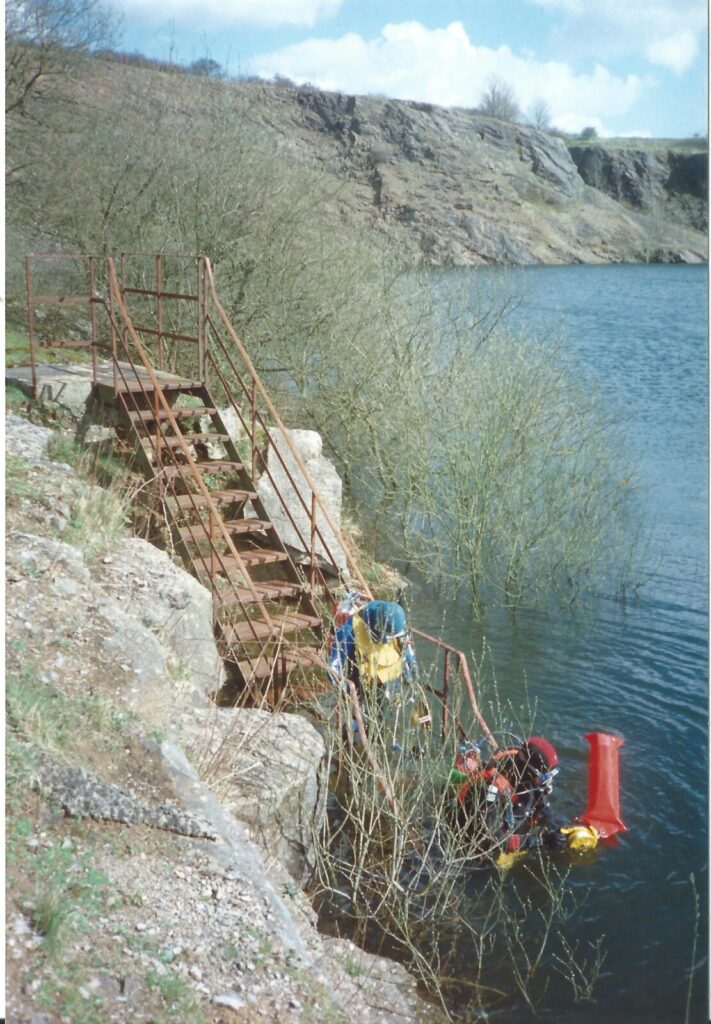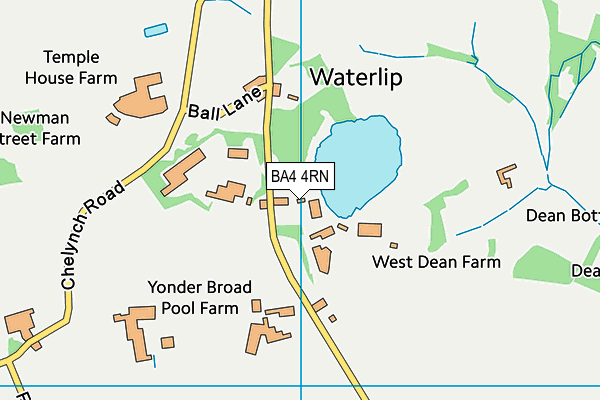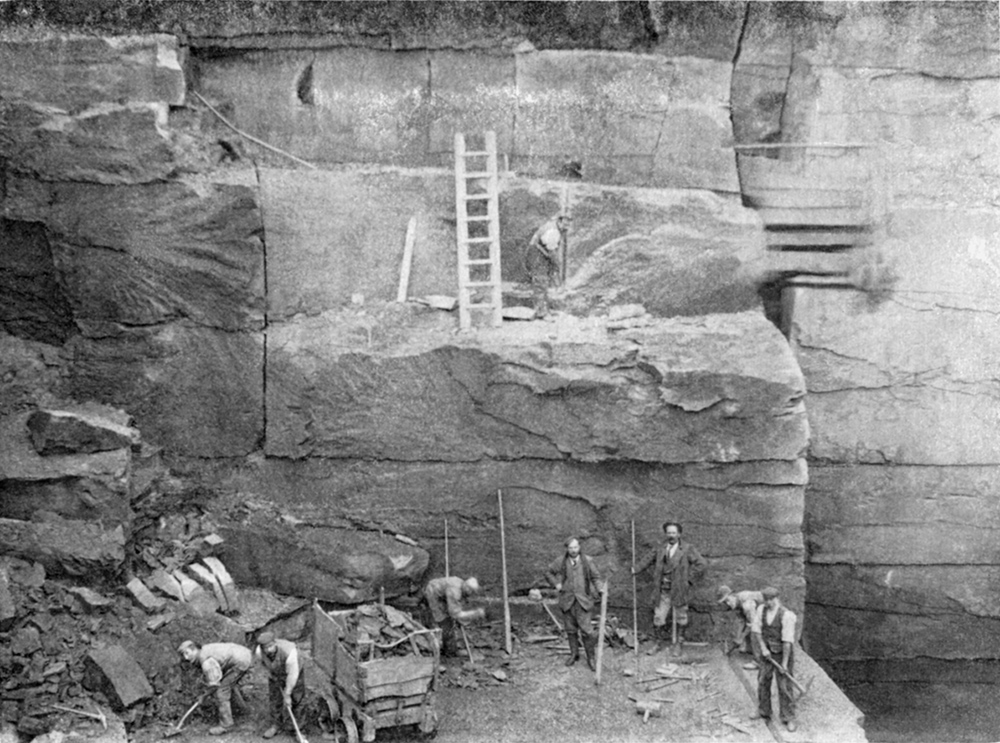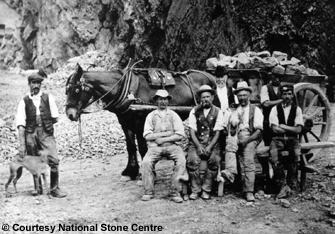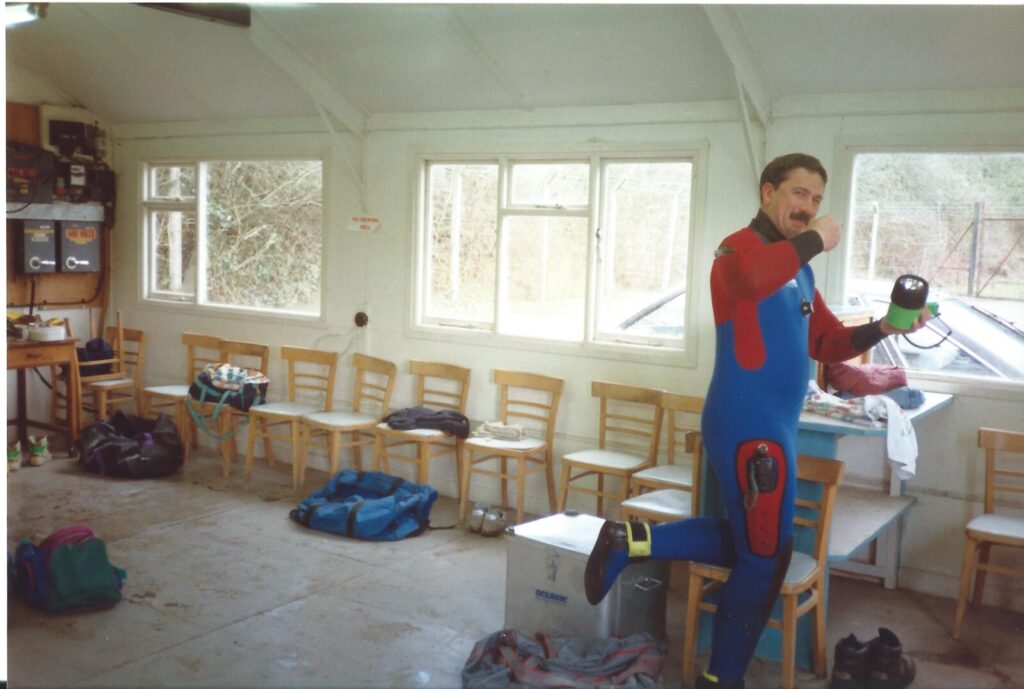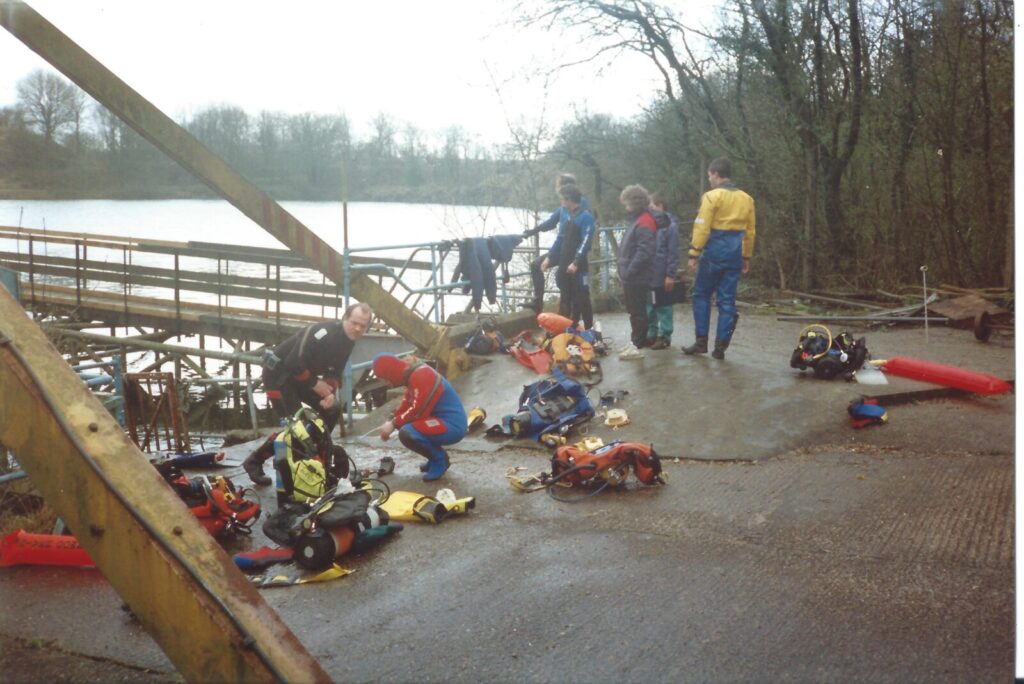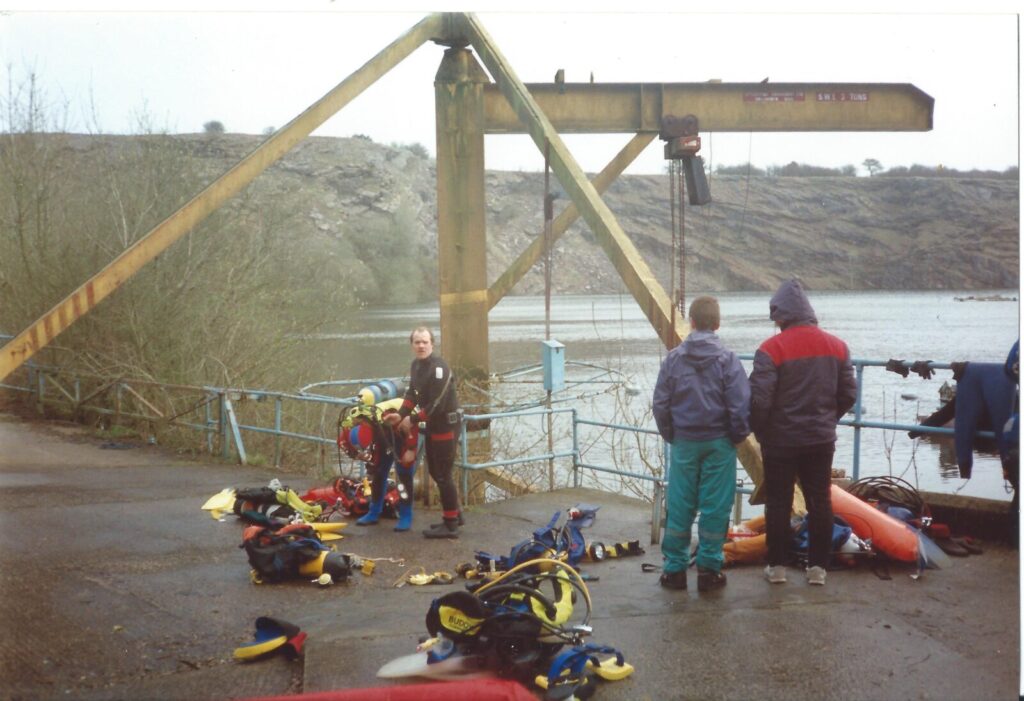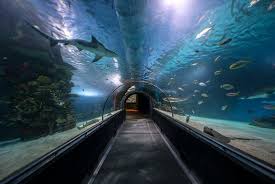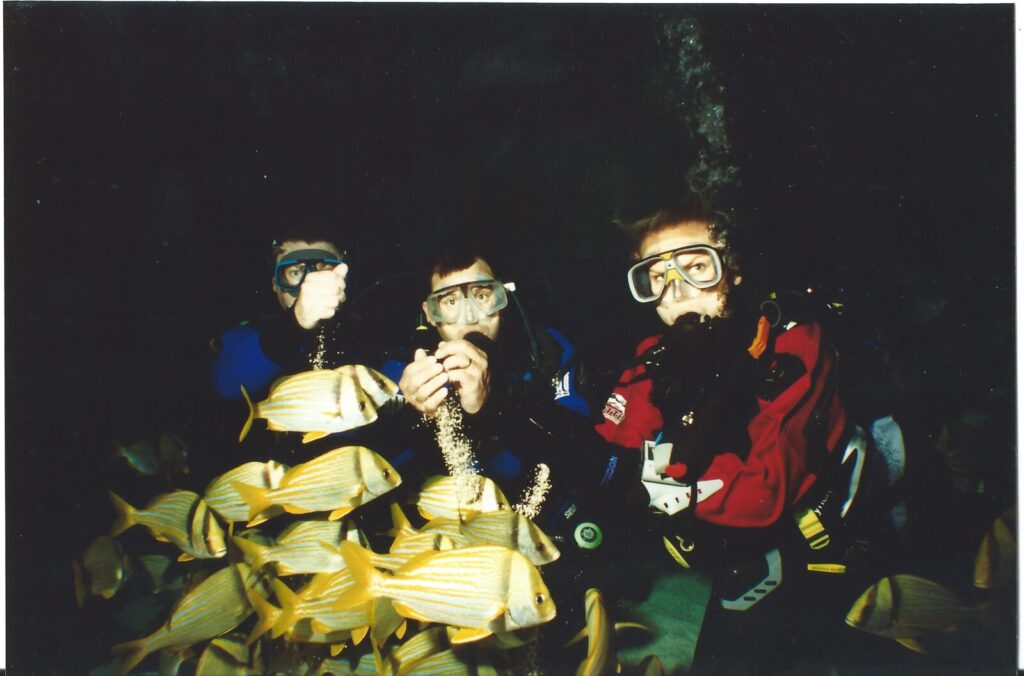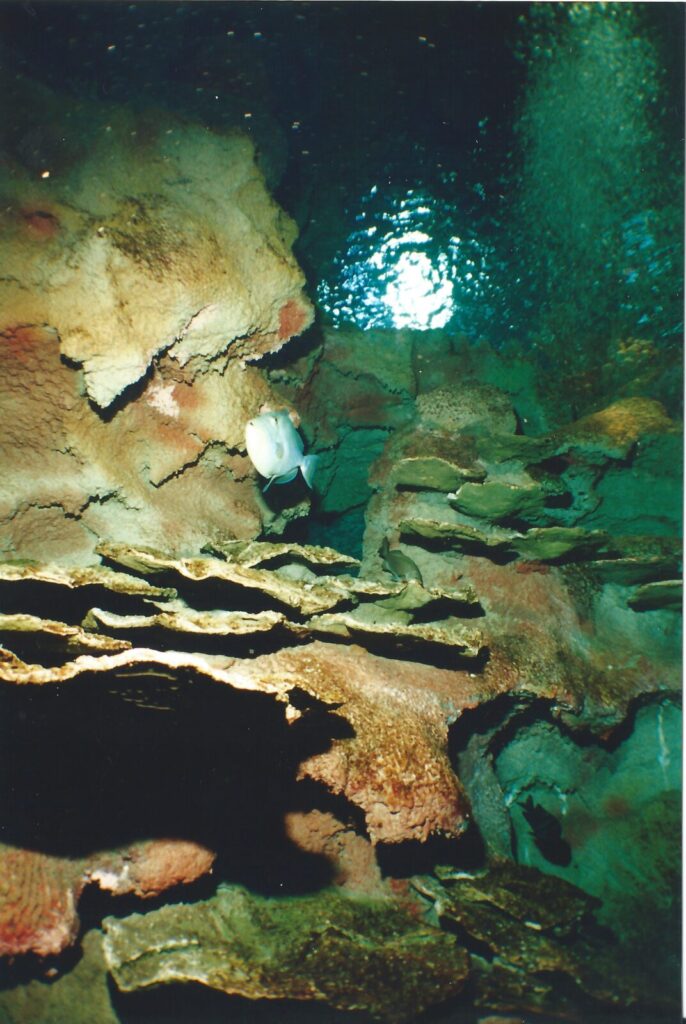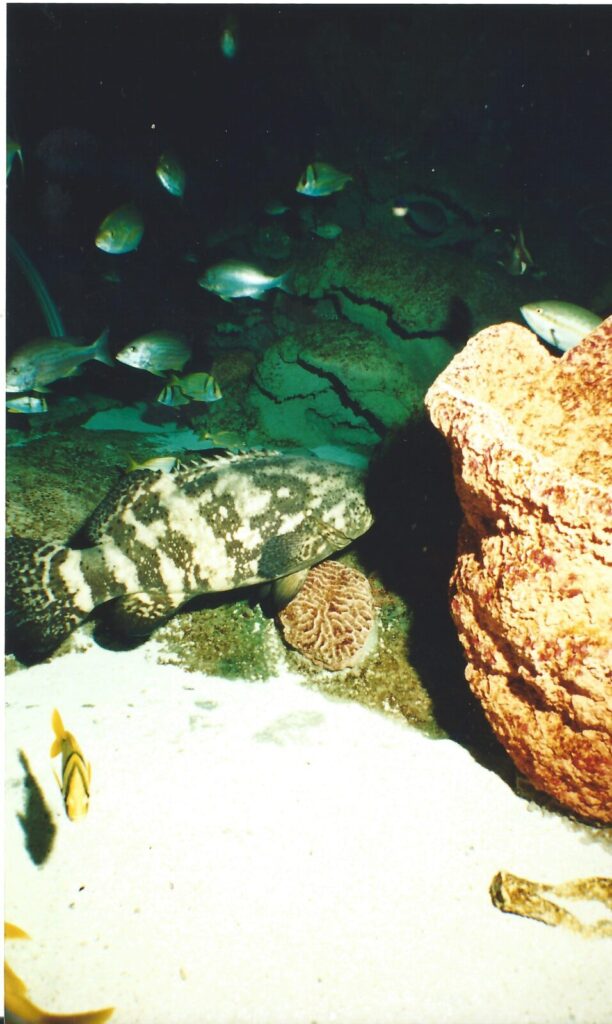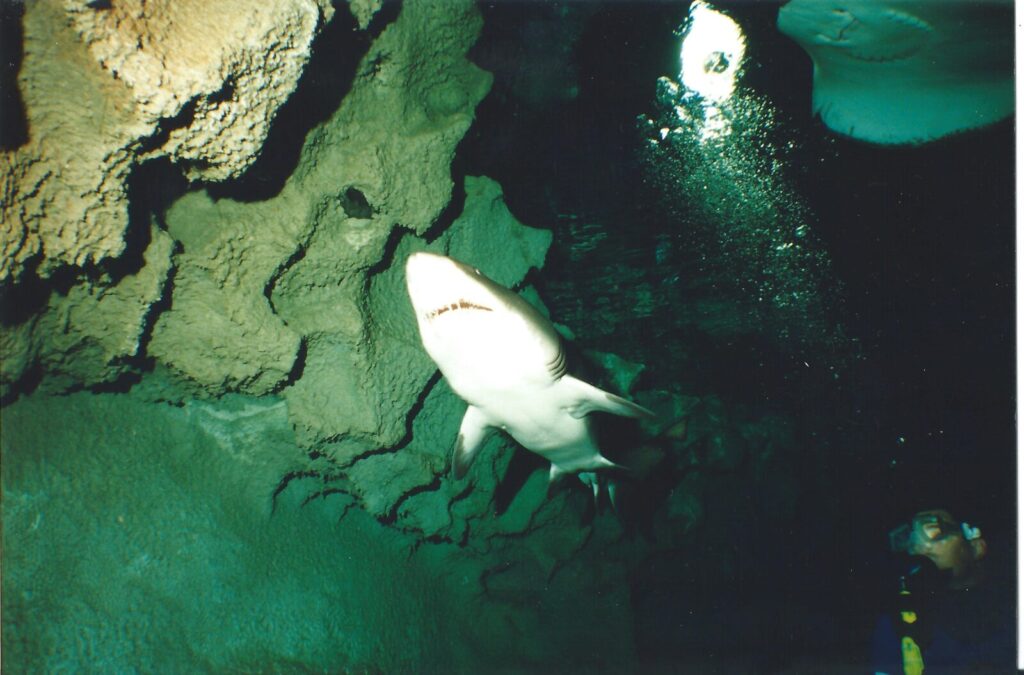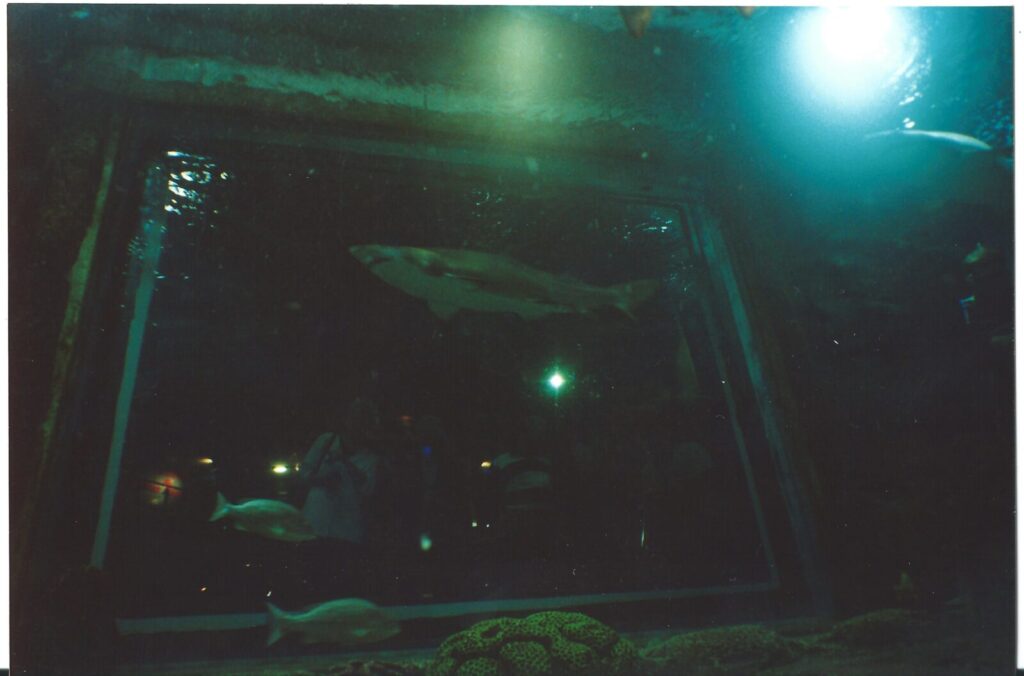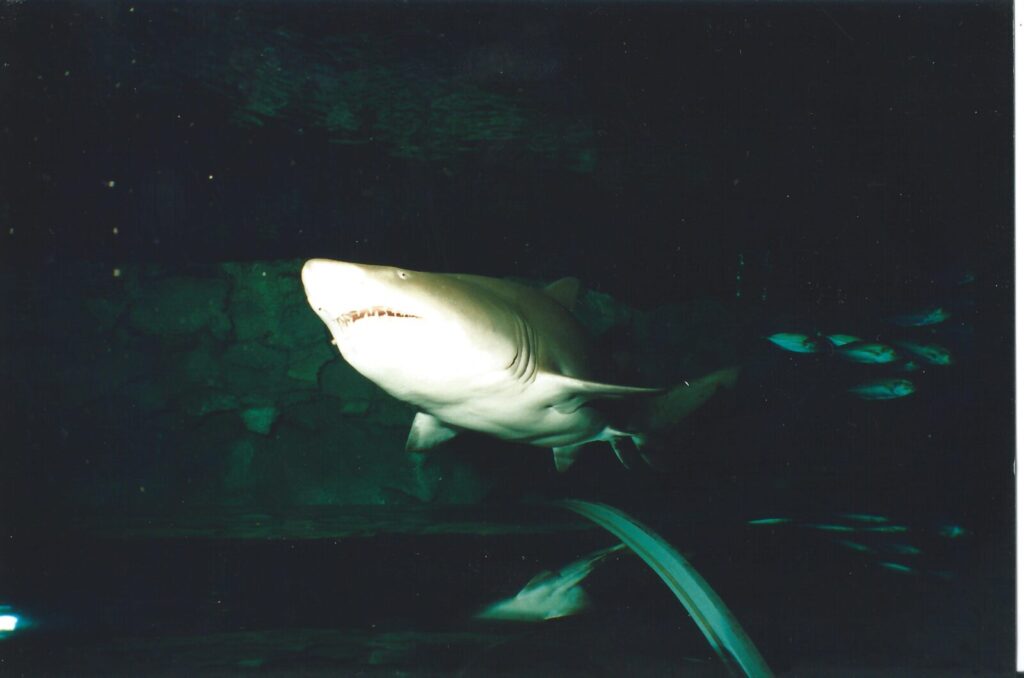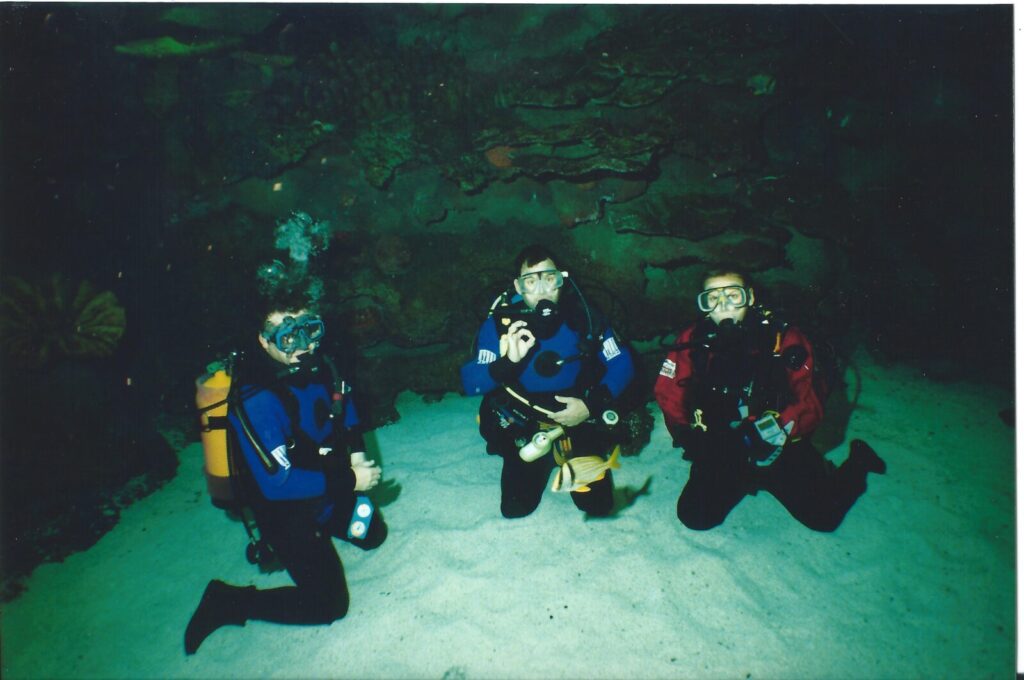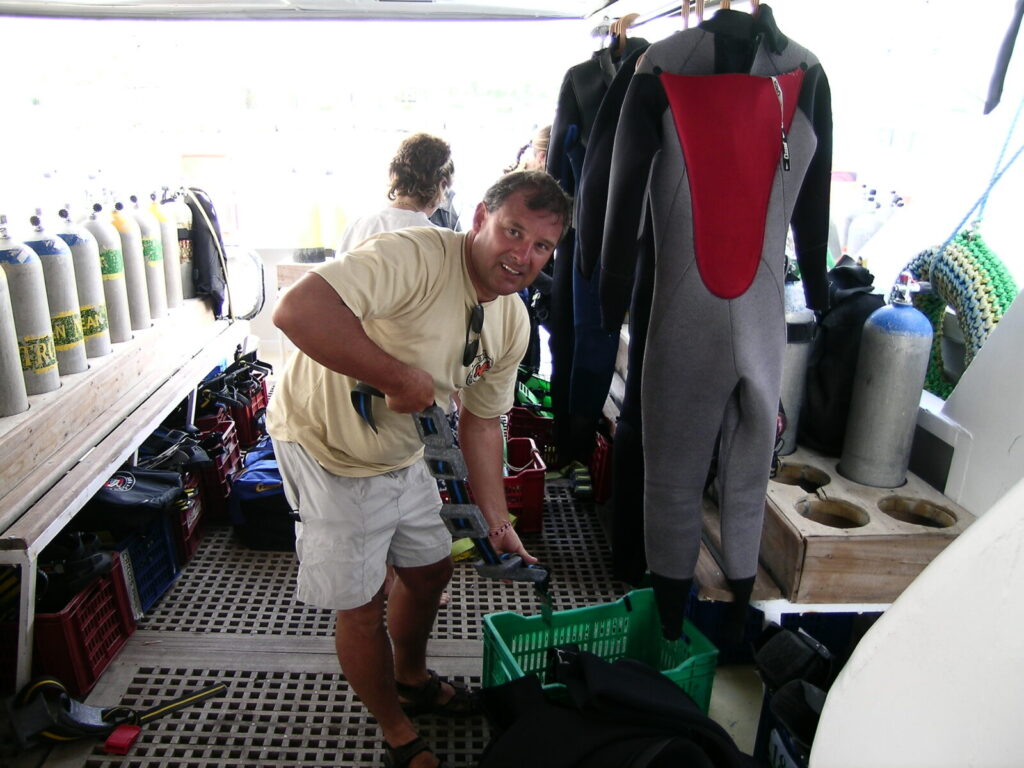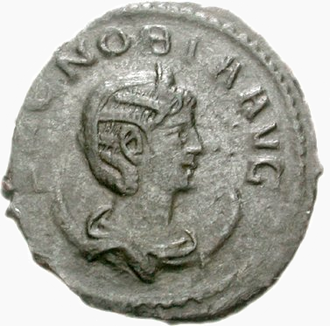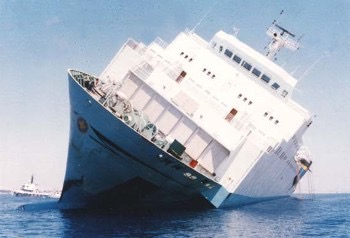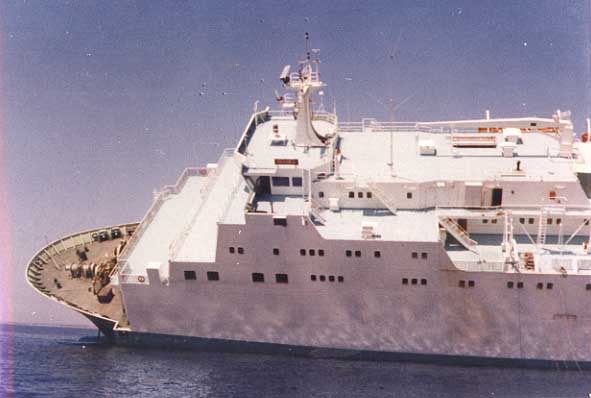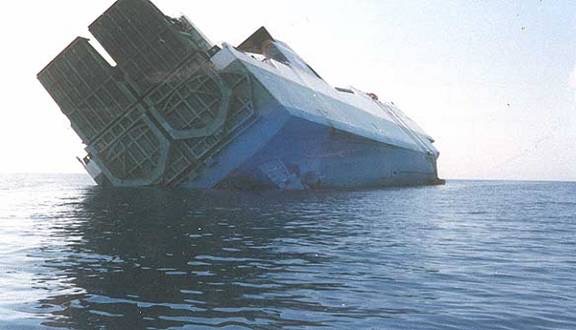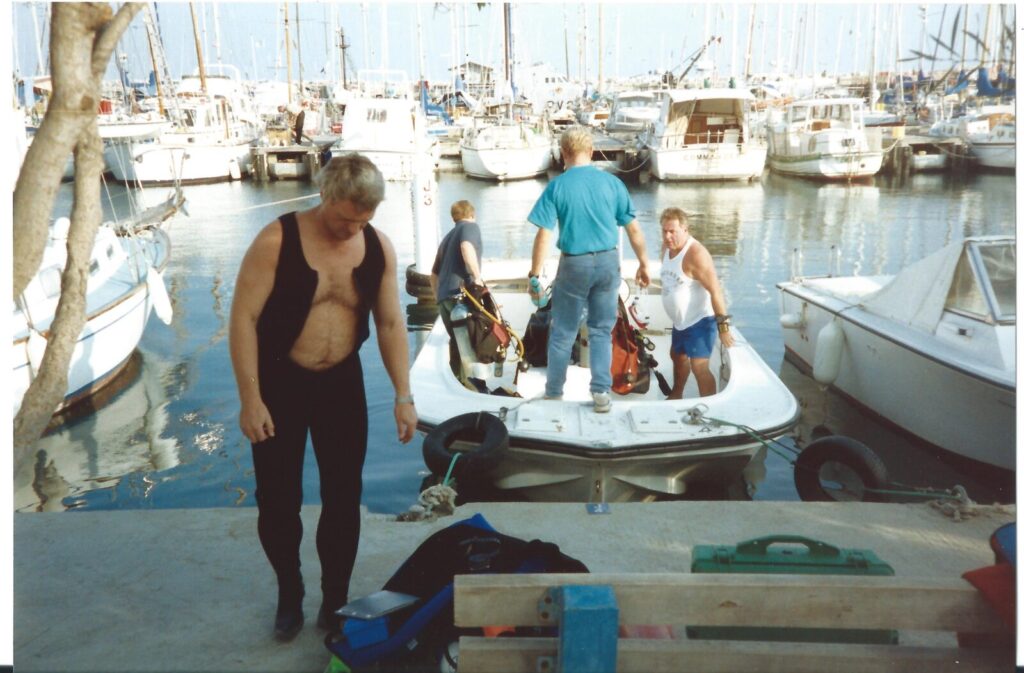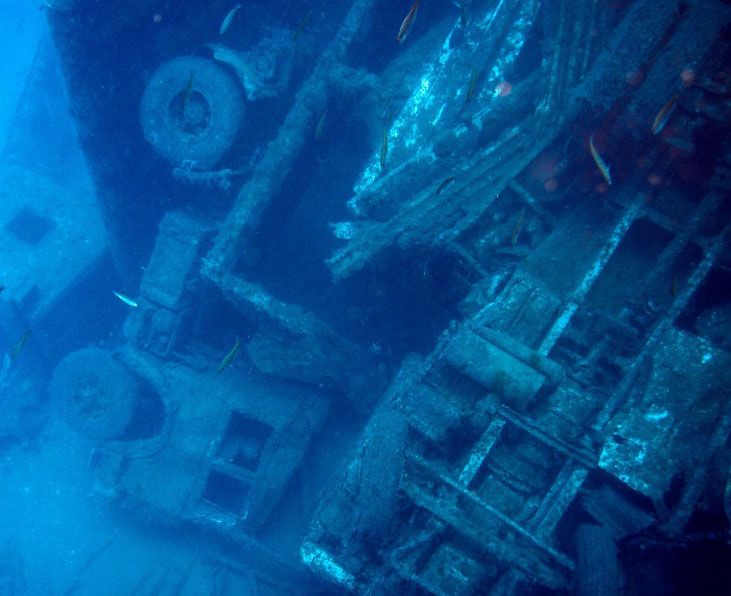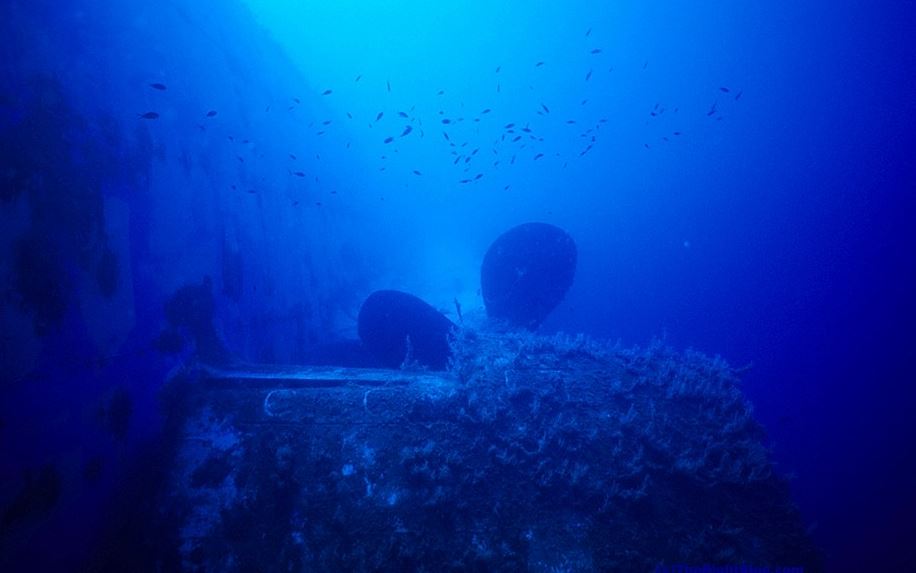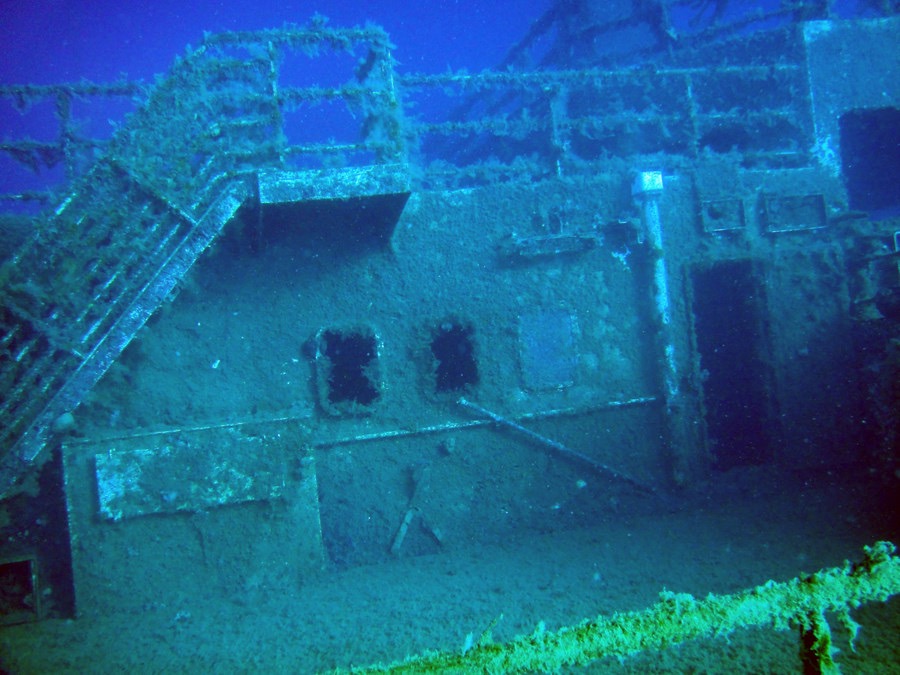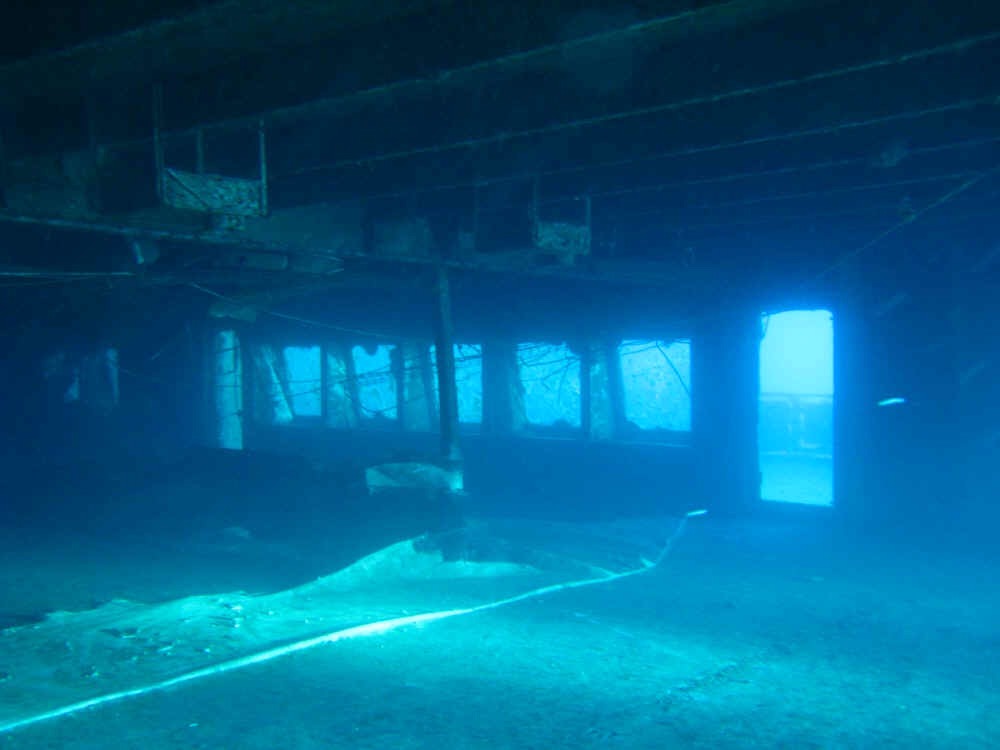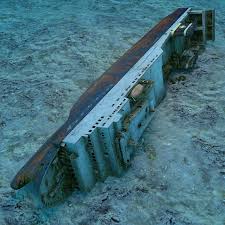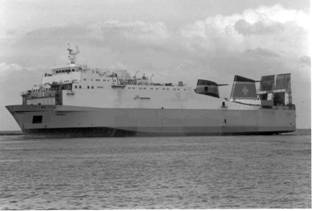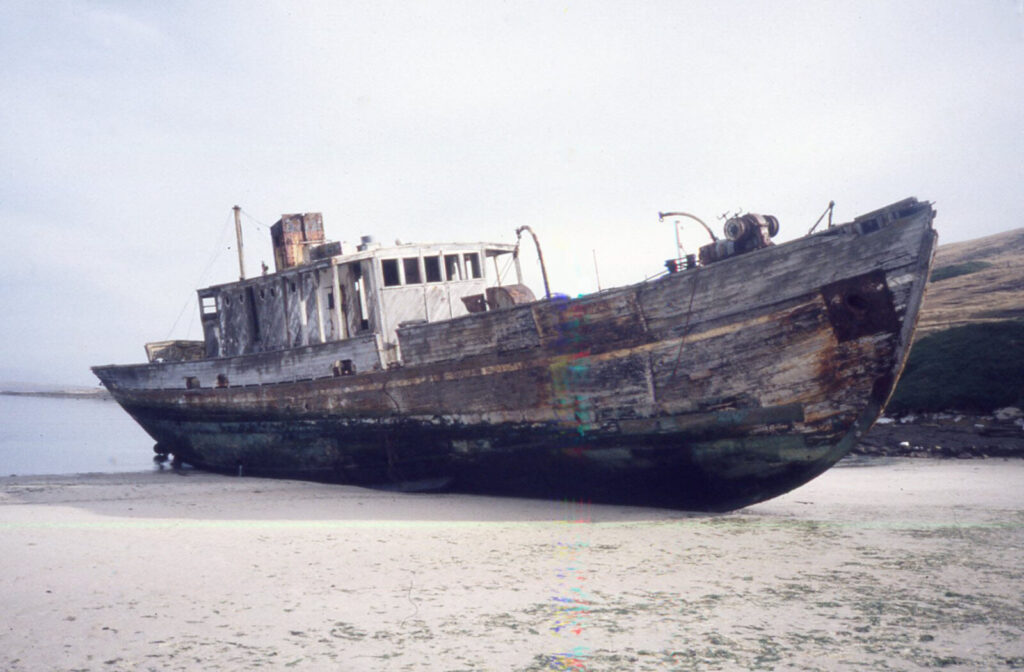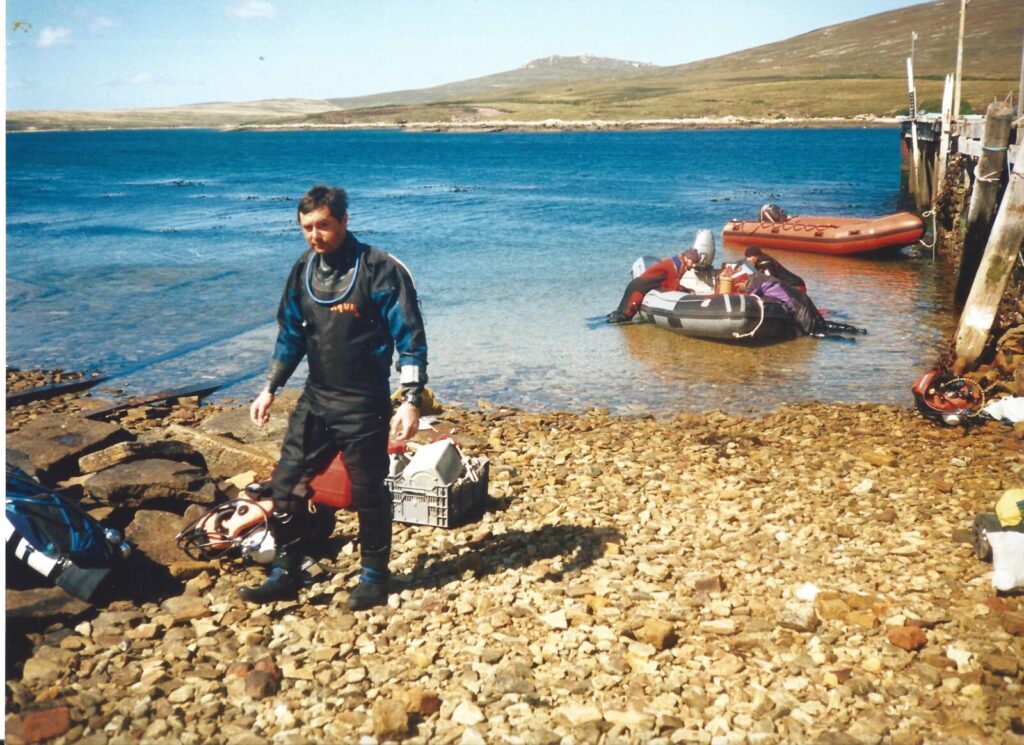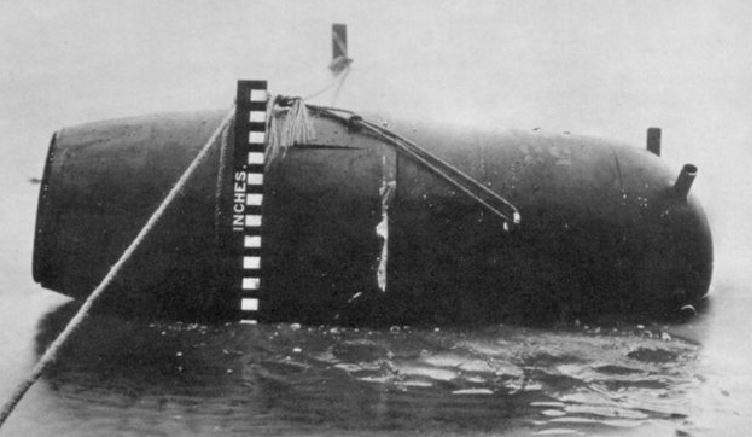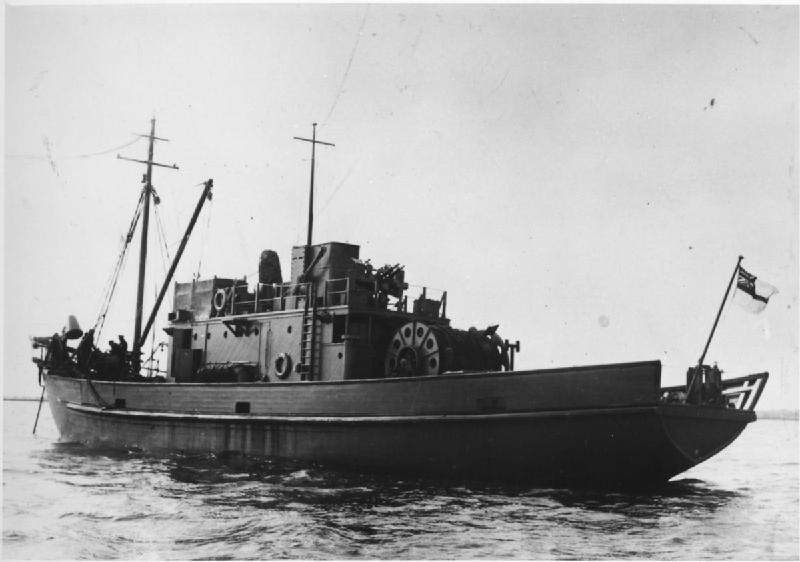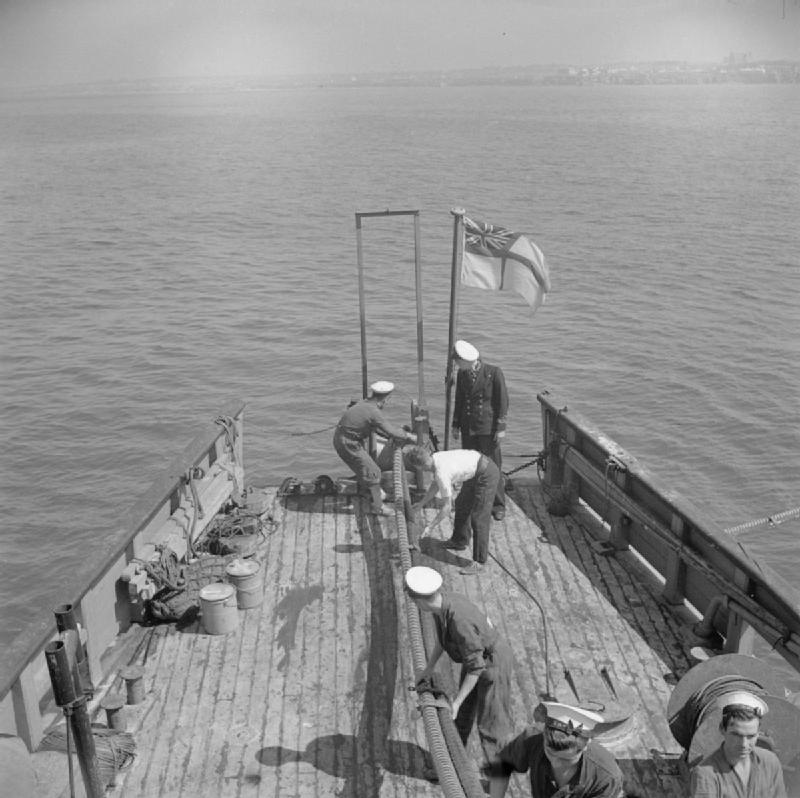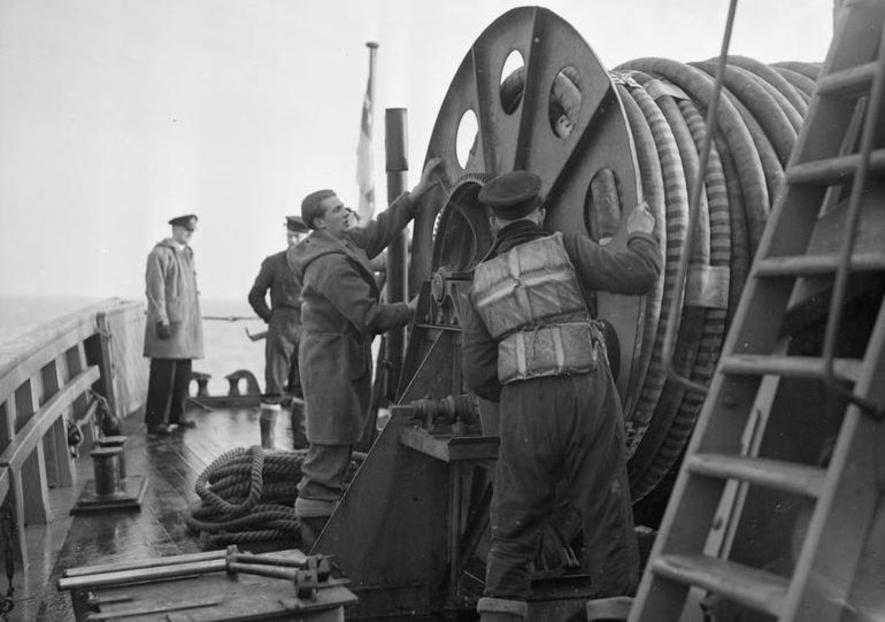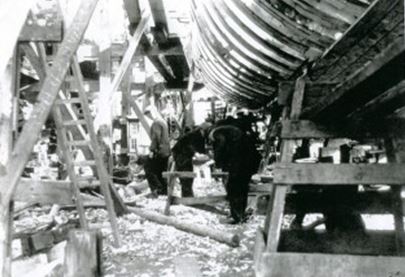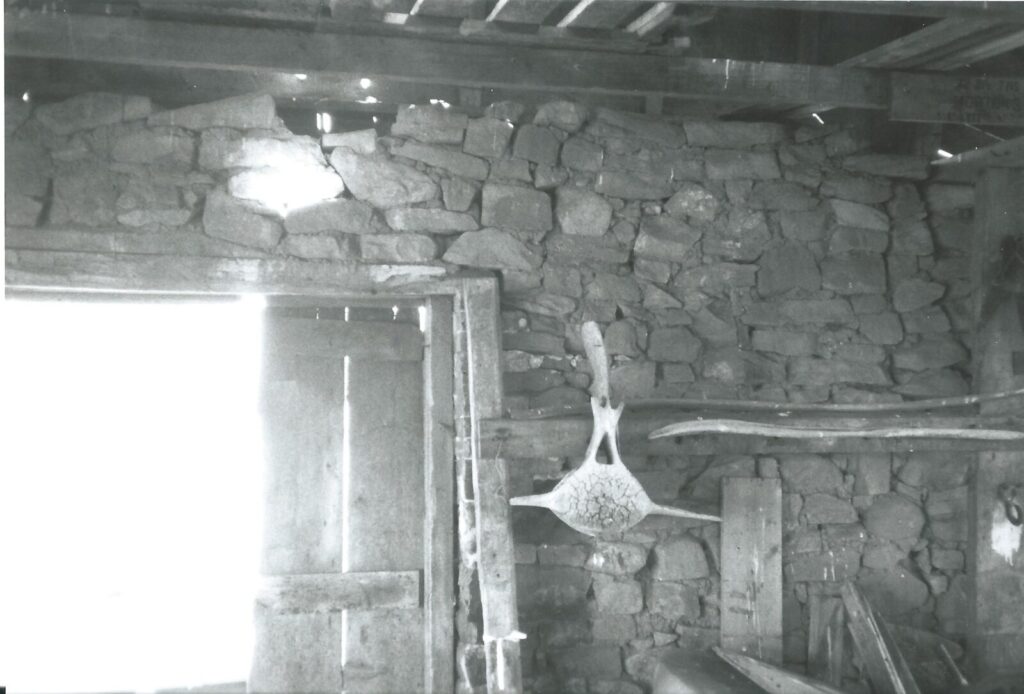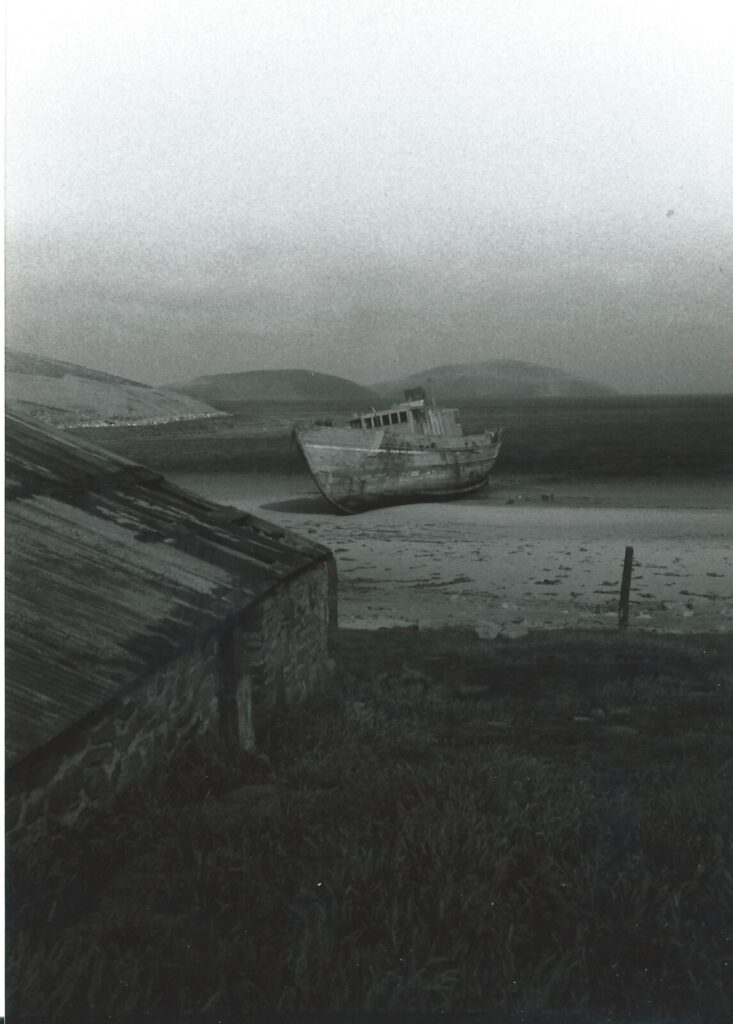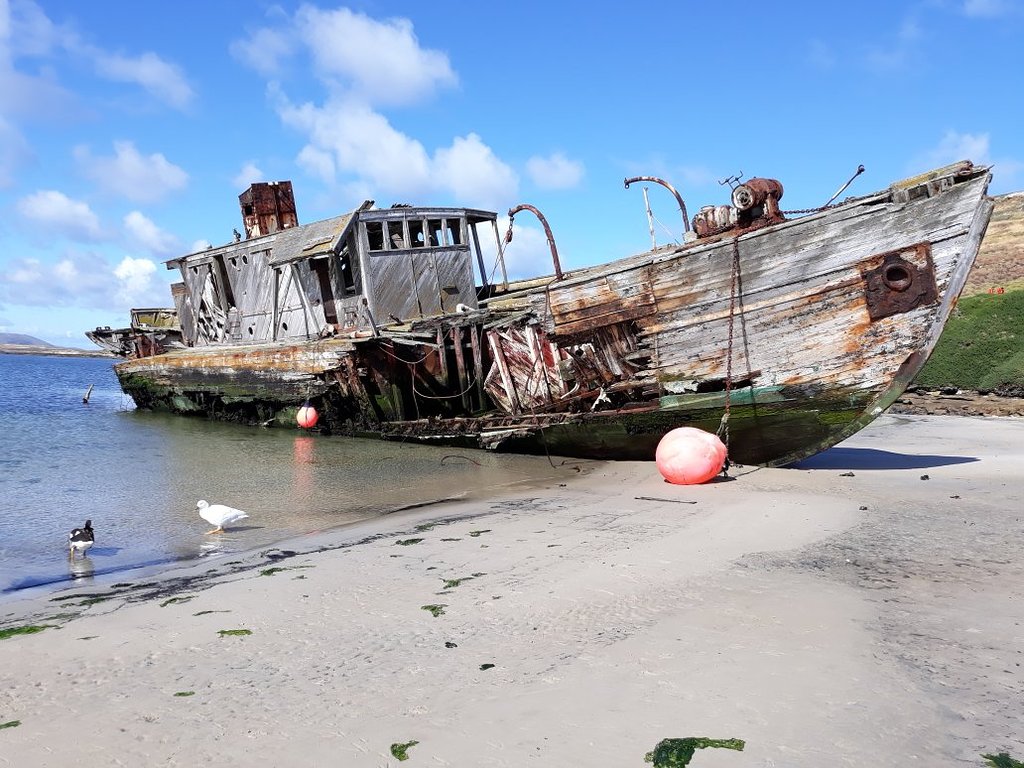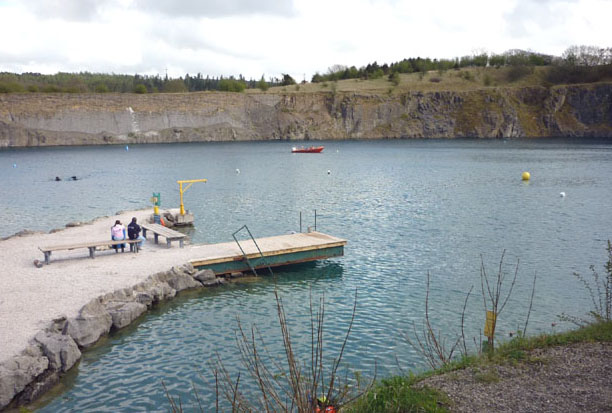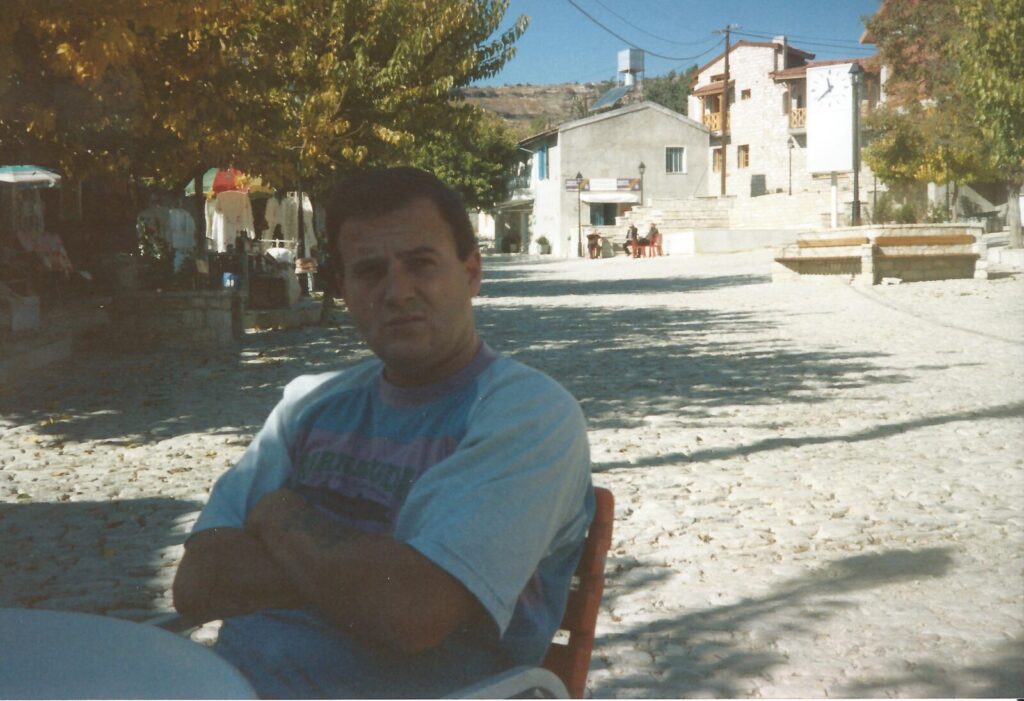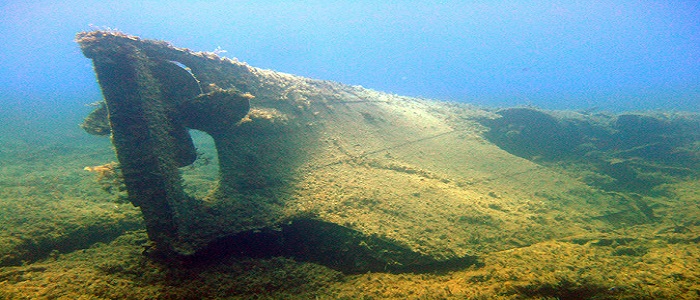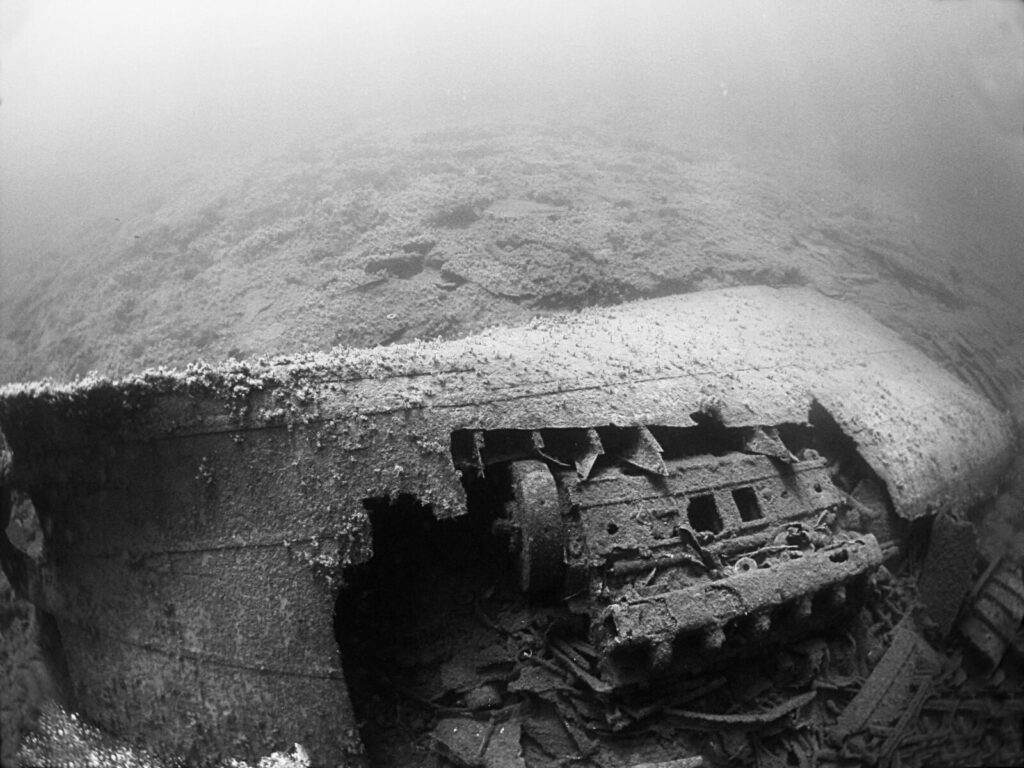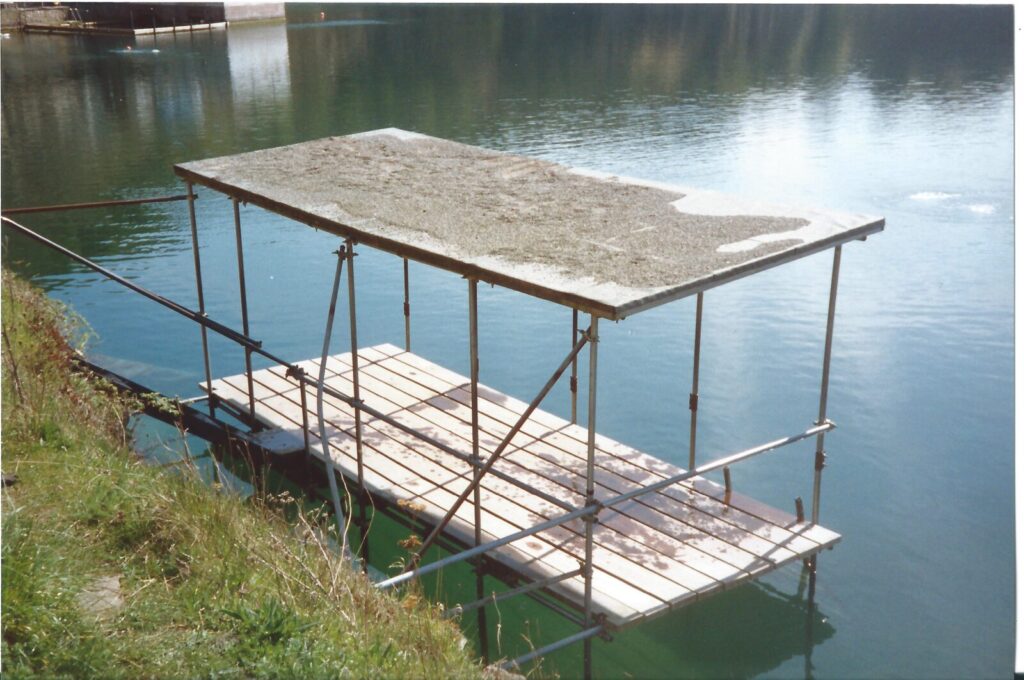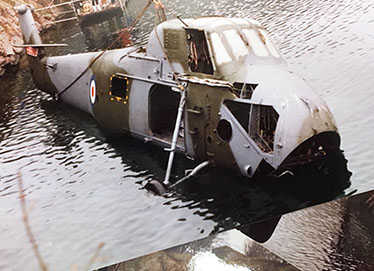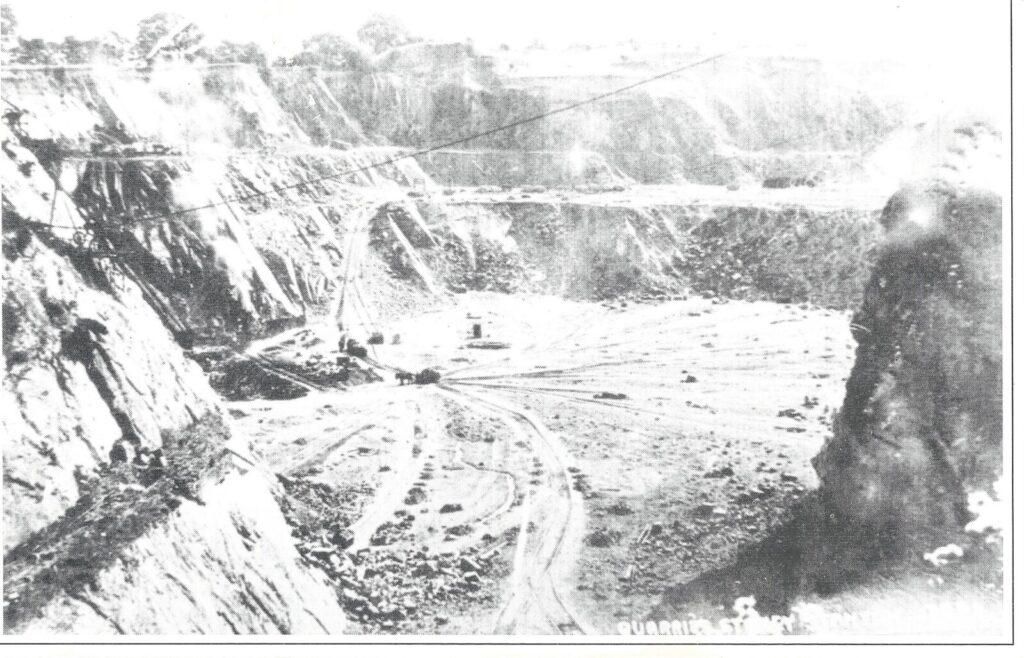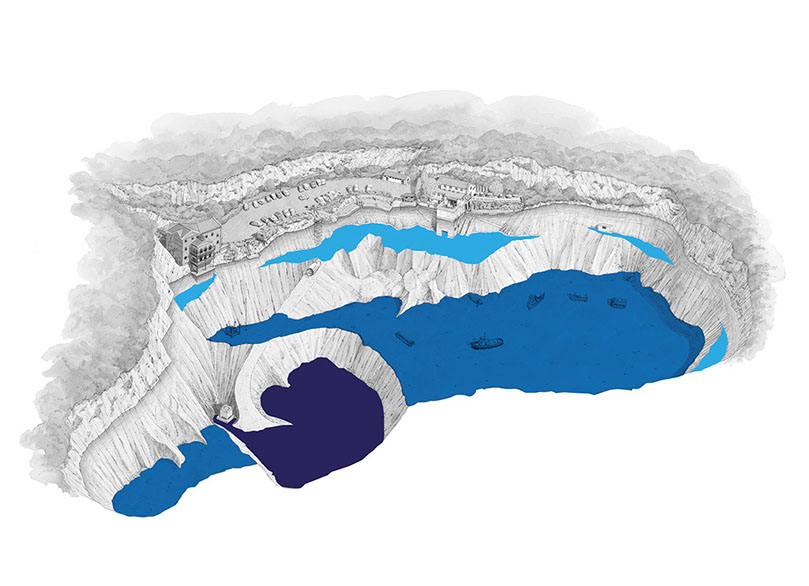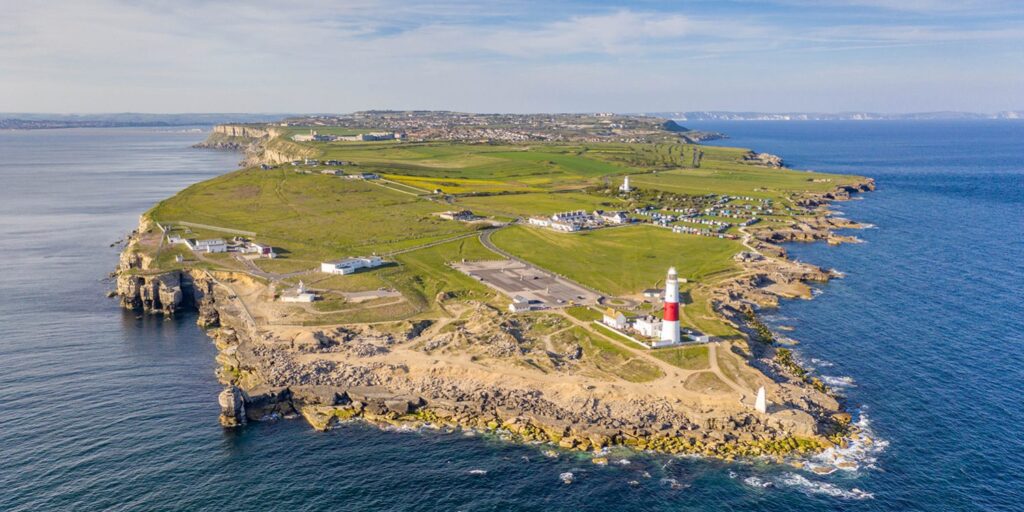
I’ve spent some time diving many sites on Portland Bill over the 10 years or so I was with the Army and the years I spent as a member of TIDSAC. I have a soft spot for the Bill and her surroundings even though many of the dives were just for fun and did not involve wrecks, unusual for me, I know! My first Portland dive was HMS Hood, written up elsewhere in this blog in September of 1991, the same day I took a dive on the breakwater which was over the Right hand side and with Gary, my buddy on the Hood, we dived to 10m and hunted the nooks and crannies of the wall and found Wrasse and Pollack on what was an uneventful dive
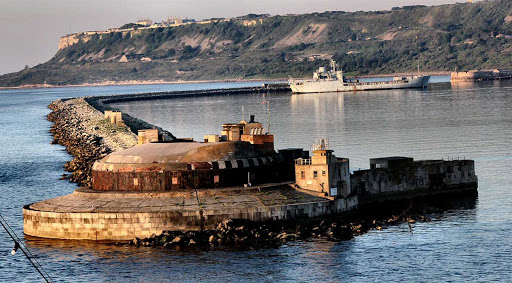
The 19th century breakwater was designed by Captain E H Stewart (Royal Engineers) and constructed in 1868 and took Seven years to finish completing in 1875. (Wikipedia) The aim was to protect Portland and it has in-built forts of a similar type to those found at Fort Bovisands in Plymouth, the breakwater fort being round and having a resident garrison and being originally fortified with 14 heavy cannon, as can be seen from the various “ports” (now concreted up) surrounding the cupola in the photo

God only knows how much stone was moved from the Bill quarries to form the foundations for the breakwater spans, it must have been a monumental undertaking at the time. The photo above shows the latter end of construction somewhere around 1875 and the fort can be seen in a wonderful chequered paint pattern in the background, that pattern has long since faded away or perhaps even been purposefully removed at a later date. It is easy to see the size of the blocks of Portland stone finishing the top of the “piers” here, and the cranes used to place them. An idea of the amount of stone involved can be gained using modern technology, state of the art multi-beam side-scan sonar allows us to look much more closely at the construction, and offers a real insight to the “divers” view of the breakwater beneath the waves
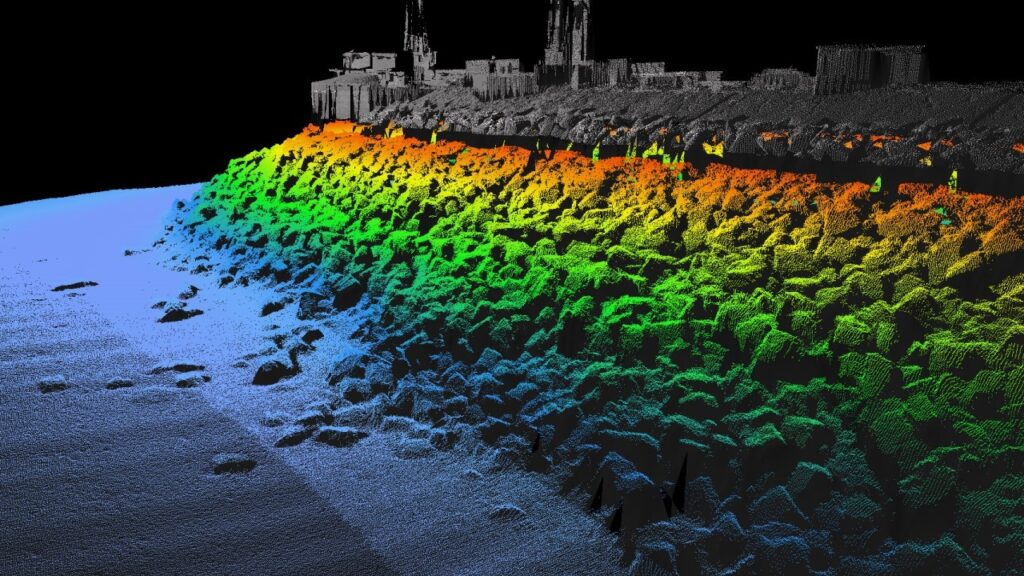
My first shore dive on the Bill was just a few months later, 02nd of February 1992 at Bull-Pit Rocks with Gary Horton, another, but at the time far more experienced, diver from Tidworth Garrison. Bull-Pit Rocks are on the South side of the Bill looking out towards the Isle of White and are marked by a distinct “Stack” said to resemble a church pulpit (the clue is in the name) with an open Bible on its’ top……. I recall it being a decent enough root around with a little caution being used as we did not want to end up too far out, the swim back would be against the tide which can run strong in this area
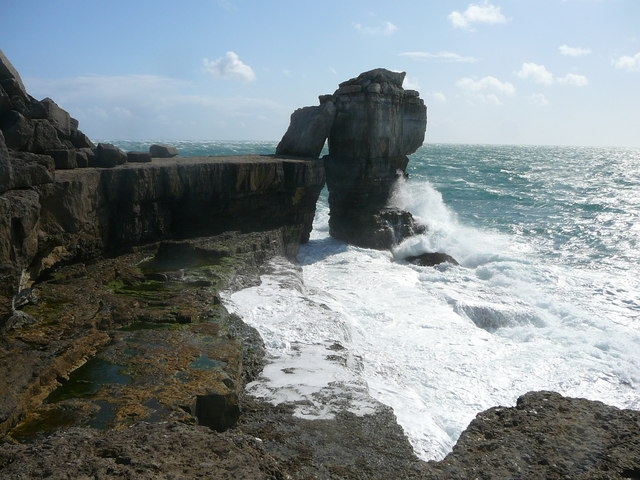
My dive log records: “Shore-Dive, Bull-Pit Rocks Portland viz 3-4m – Cold Dive 6’ W. Temp Hunting crevices, amongst Kelp, few Crabs, very turbulent……..” I do recall the entry being a challenge, for the first time I had to judge a giant stride entry into tidal surge over rocks, it could easily have gone badly wrong, but I judged well and the dive went well too, the exit was a challenge too, only not as much surge which allowed Gary and I to haul out onto rocks without damaging ourselves or our kit…it was a decent little dive and I was keen to do more!
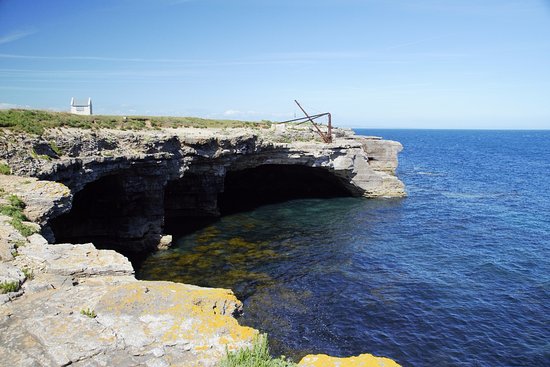
That same day Gary and I headed over the Bill to Chesil beach, the idea was to find the wreckage of the Royal Adelaide, wrecked on the beach in a storm in November of 1872. The Royal Adelaide is a strange story, the passengers and crew were saved by locals in what can only be described as heroic actions by groups and individuals, wading into the storm washed sea to pull hapless souls to the shore, or using rope to ferry them between ship and shore…. A truly epic tale of bravery……and what the wreck would have been primarily remembered for had it not been for the Royal Adelaide’s cargo of casks of Rum, Gin and Brandy…….The rest of the story has been the legacy of Royal Adelaide ever since, those rescuers often becoming casualties of liquor, drunk on the beach on a terrible storm ravaged night, some succumbing permanently to the effects of alcohol, or the cold, and passing away into history and local legend…….
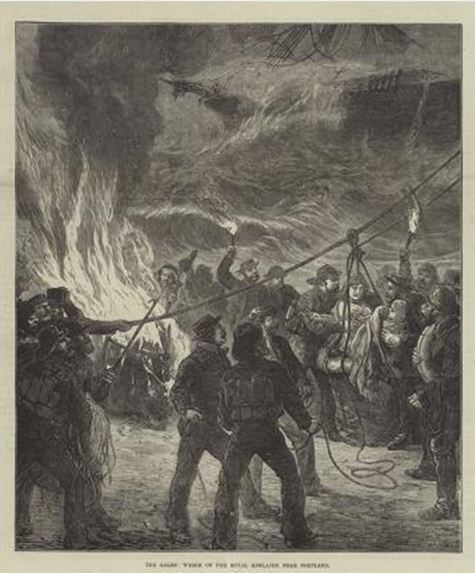
Despite looking around for the wreckage and finding various twisted pieces of metal, obviously aged and corroded, Gary and I could not honestly claim to have been on the wreckage, the viz was not great and there was nothing we could truly identify as wreckage from the era. I wrote the dive up: “Shore dive – Chesil Beach – Portland…..Viz 2-3m – Cold Dive 6’ W. Temp…….Basic ferret about, loads of Atlantic Prawns, some wreckage, the odd crab……” and getting out following the dive was nothing short of a workout….you could accept it, stand up and tough it out, walking up the Two distinct pebble slopes of the spit of Chesil beach, or you could crawl up on your hands and knees……I’ve never crawled anywhere, I wasn’t going to start now….but boy did it cost me, every step up was half a step back, when I finally got to the top of the second slope onto more compact pebbles I was a beat dog, breathing through my arse and my calves and thighs were on fire……and I was just 32, fit as hell and a soldier….Jesus…..what a place!
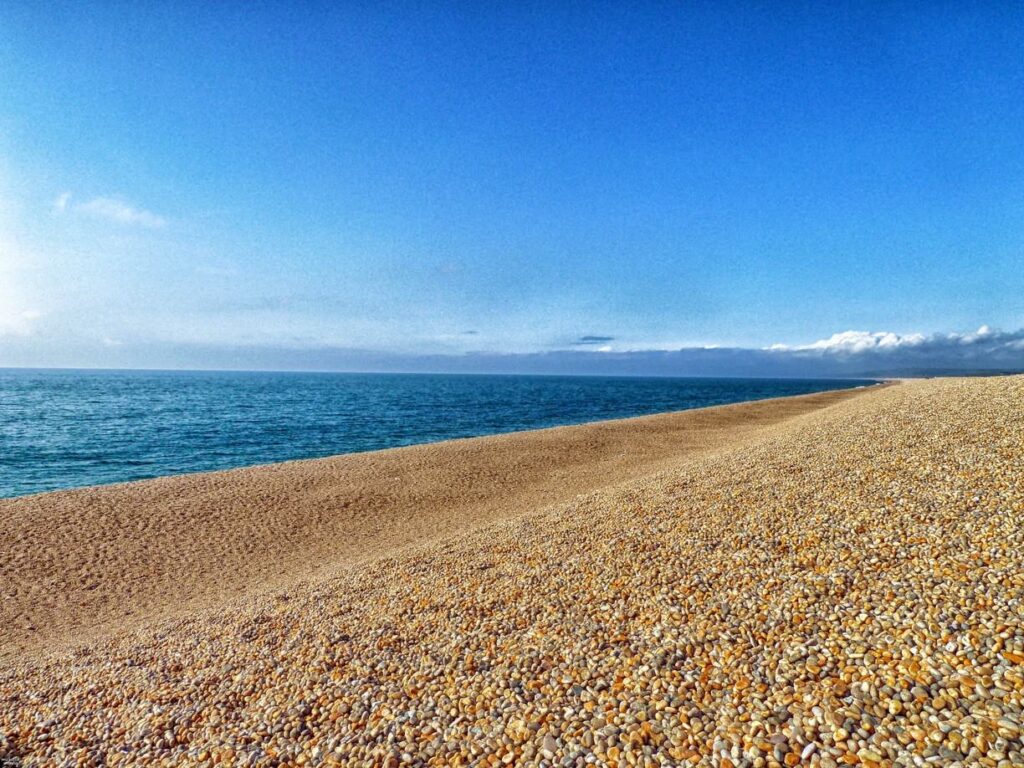
After a bit of a break from Portland and the South coast, diving exotic locations and doing the day-job, it would be February of 1995 when I returned to Portland and the Bill. This time I was with Denise “Toots” Tuttle, I liked Toots, despite being female in a largely male world Toots could hold her own, and give back the shit she took with interest, and I loved and respected that……. Toots was a mate, I enjoyed teaching her diving and I trusted her whenever I dived with her! This was an opportunity to get a drift dive in otherwise poor conditions…..Ferry Bridge! One of the reasons I liked Portland was the diversity of dive opportunities it offered, if you got there and the sea was too rough to get out of the harbour, or your time was limited, you could drop in on one or another of the wrecks in the harbour, the Countess of Erne, the Bombardon and Tug, the landing craft or the Spaniard (all topics of posts to come…..). Weather great, but full boats…..do Chesil or the shore at Church-Ope or off the Lighthouse, or Pulpit Rock….. or take a drift dive under Ferry Bridge……
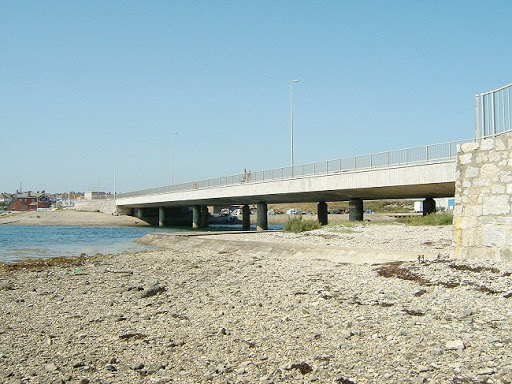
Ferry Bridge is a good introduction to drift diving, it is mostly a Knot or so current, perhaps a Knot and a half which is manageable for most, even those who struggle with buoyancy a little on occasion, so there won’t likely be problems from pneumothorax or interstitial emphysema as the depth is perhaps 7m max, it doesn’t mean these issues can’t happen, it just means they are far less likely as 7m is the centre of the scour under the bridge and the lead in-and-out is short. Ferry Bridge can be an education to those deploying and controlling their SMB’s and it is great as practice for that too……..The access is easy too, there is an easy path down to the Bridge from the Ferry Bridge Pub side and a flat area there for kitting up. A short swim out into the jetty and mooring area and then a descent into the current, as the water is constantly refreshed between sea and harbour the viz is usually decent too, meaning separation from your buddy isn’t likely either
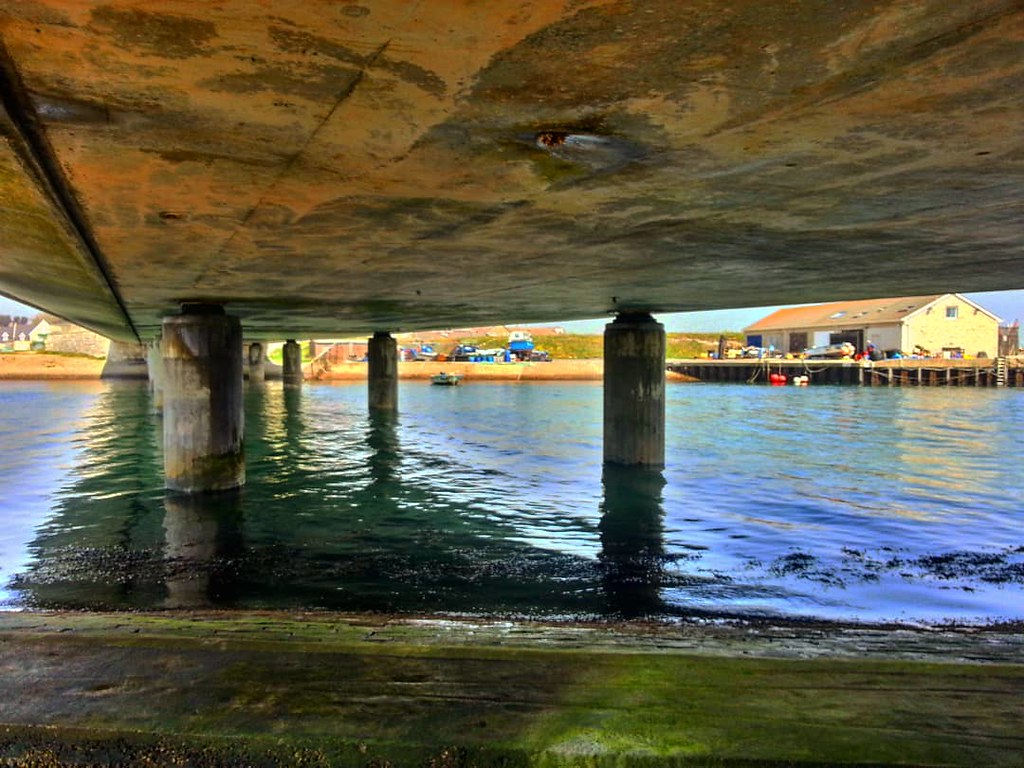
My log book for the day read: “Shore-Dive-Ferry Bridge- Portland Nice Little 2-3Kt Drift –viz down to 2m – good easy fun dive – no frills”…….. a month later, 08th of March ’95, I took a couple more trainees back for a nav-ex and drift, again my log-book records: “Nav-Ex Leading to a gentle drift 1-2Kt novice skills dive Viz 1m” Neither dive was going to set the world alight, but then neither was intended to, Ferry Bridge did exactly what I wanted and gave a gentle lift to the skills of those I was diving with without too high a task loading!
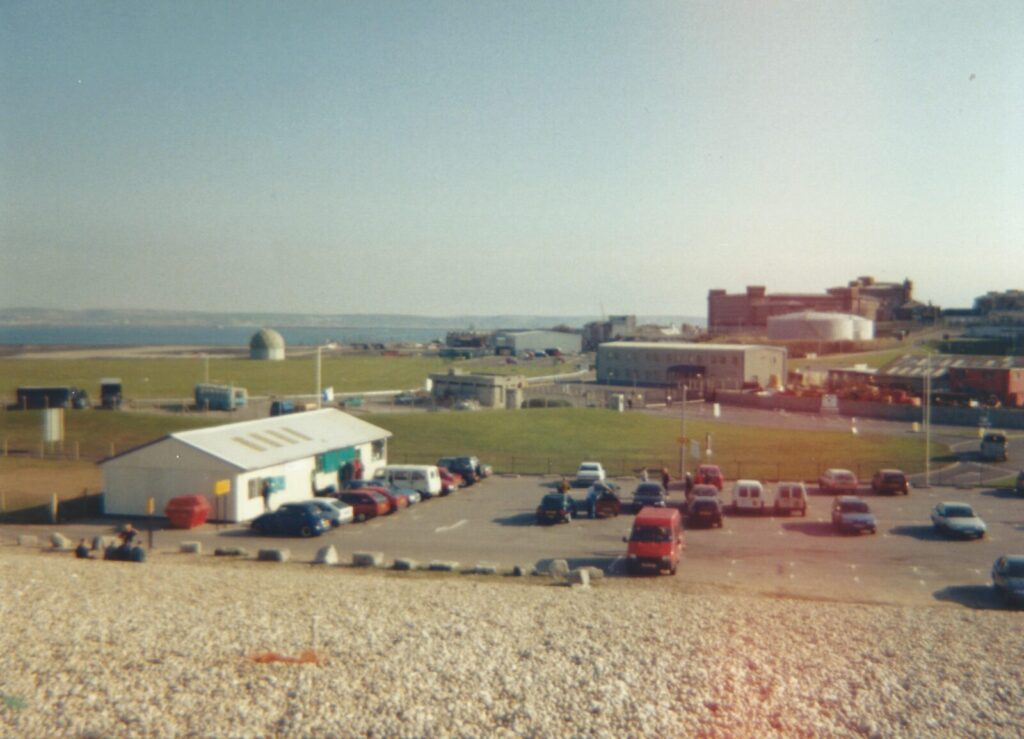
I had a wonderful dive off Chesil beach later in the year, further down towards Fortuneswell, a little down from, and behind, what used to be Parry’s Dive centre. It was another Wednesday afternoon dive with Toots and we had heard the sewage outlet pipe was worth a look…..now you could be forgiven for asking why anyone would want to dive anywhere near an outlet pipe, but this one had been de-commissioned (at least that’s what we were told) years before. Following the pipe for a while and then, when we were at around 10m depth, swimming around “ferreting about”, we had a delightful dive, my log records: “03/05/95 Shore dive-Chesil Cove- Portland…pure pleasure dive hunting round the outlet, through Kelp fields, a couple of Wrasse, a Pipe Fish, a large Cuttle-Fish and plenty of Pollack (Small) couple of Spider Crabs – very enjoyable….” The log, as usual, understates the experience a little here, I remember spending some 10 minutes of the dive watching the Cuttle-Fish “irridesce” which I found absolutely mesmerising, such pre-historic creatures with such amazing capabilities, the colours were both vivid and beautiful
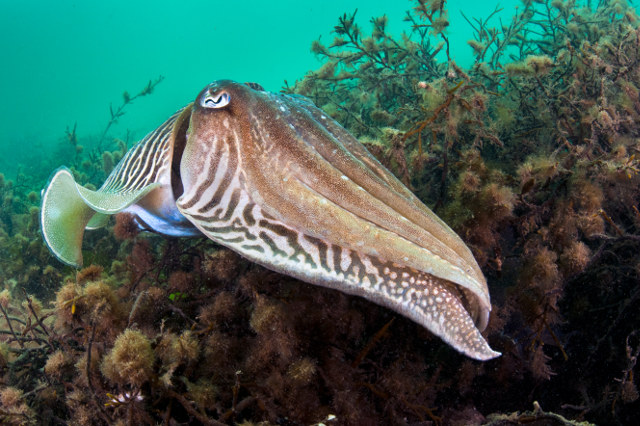
So why is Portland such a good shore dive-site, well I have talked already about the weather influences, the geology helps a little too, as does the nature of the geography, Portland Bill essentially sticks a good way out into the sea, catching the tidal influence of the narrowing between the Isle of Wight and the mainland, essentially experiencing a faster current running along shore and bringing cleaner water in from the Channel mouth, this combined with the “Lower Purbeck Beds”, a former Limestone plateau from the Jurassic coast, lifted up by tectonic movement, mean the coastal rocks give clearer water than the clay side of the harbour and a nice, flat-ish area to use for kitting up and entry
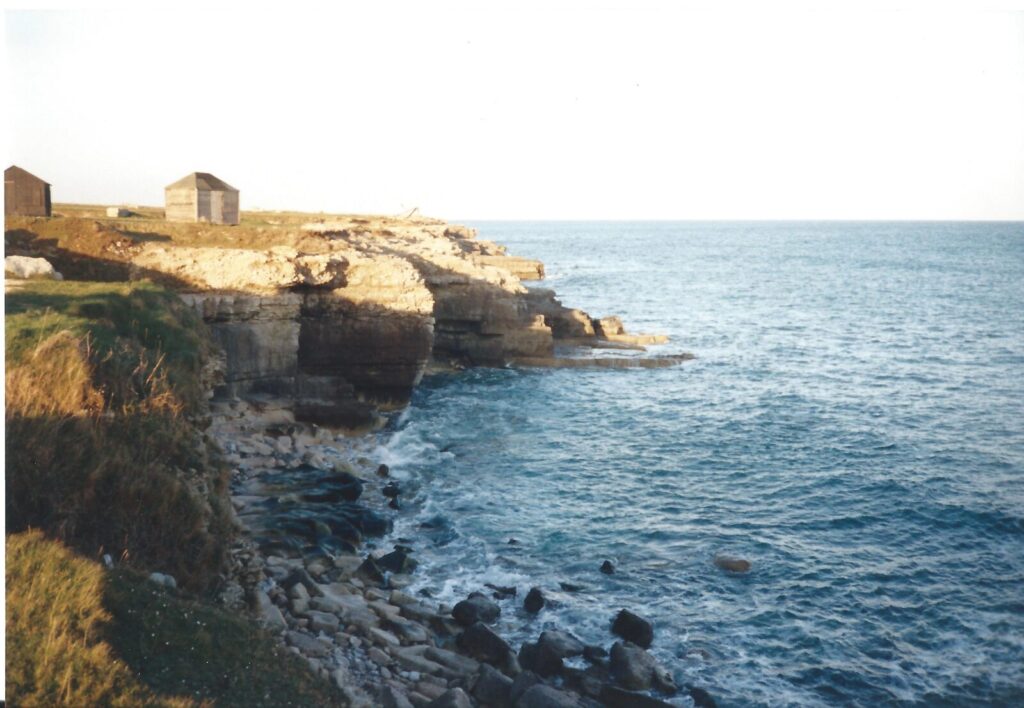
For those of you who liked the Waterlip Quarry geology piece:

“A chemical reaction in the warm, shallow seas where Portland Stone was forming caused calcium and bicarbonate ions to combine, forming a ‘muddy’ calcareous precipitate. Minute particles of sand or organic detritus, such as shell fragments, lying on or in suspension close to the sea floor, acted as nuclei which gradually became coated with this fine-grained calcium carbonate. Over time more calcium carbonate accumulated around these nuclei in concentric layers, forming small calcareous spheres (less than 1mm diameter). Countless billions of these spherical sediments, called ‘ooids’ or ‘ooliths’, ultimately became buried and partially cemented together by more calcium carbonate, resulting in the oolitic limestone we now call Portland Stone” (Wikipedia)
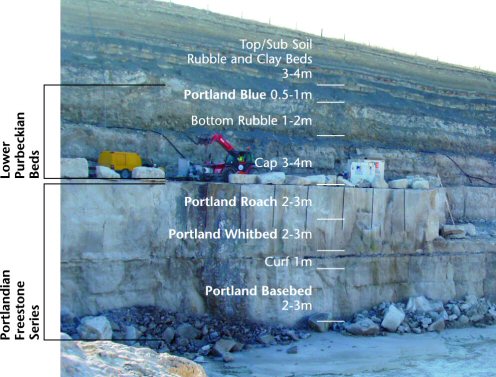
The next dive I completed at Portland was a shore-dive off the Limestone rocks on the Church Ope cove side of the Bill, or the Left hand side looking down the Bill towards the Lighthouse…. at an area roughly around First Beach, the surf was up a little although that was to be expected in March. The sub-sea landscape on each of the dives in this area is, in my experience, rock gullies, some with remnants of the numerous small craft lost in the area such as the SS Bournemouth (1886) or the Reliance (1949)…….

……..or fishing or carrying quarried rock from the workings on-shore and oddments lost or abandoned like anchors, chain and undetermined metal-work, beams and struts perhaps from damaged or lost cranes off the headland. There were several of these still in usable condition at the time and I always loved the look of them, stark against the sky-line and brutally industrial…….

Entry to the water was always a challenge, it helped to have scouted beforehand, so you know the step-in will not be too shallow and end up “painful”. The swim out was usually against the incoming tide, I preferred that to out-going as that could end with a long swim back-in against the current, and there was never any great depth, these were shore dives down to 15m or so max, purely to enjoy and became a favourite “ferret around” of mine and Toots on Wednesday “sports afternoons”, which, although I didn’t know it at this point, were fast coming to an end and would eventually see me leave the Army just a year later, after Six years on and off in Tidworth. That wouldn’t end my time in Portland though, in fact it was really a beginning of sorts………
